Hello my friends,
On my trip to Rabat last Tuesday, my first destination was the famous Hassan Tower, the capital's most emblematic historical monument. However, having arrived early in the morning, the site was shrouded in thick fog. The tower was barely visible, which gave it a mysterious and special atmosphere. So I decided to walk around the area until the fog cleared a little. And indeed, when the sky cleared, the tower finally appeared in all its splendour.

Before entering the main esplanade where the Hassan Tower stands, I discovered a magnificent square called November 16th Square. With its well-kept green spaces, this square immediately captivated me. As I contemplated the beauty of nature, I felt overwhelmed by a gentle serenity. What makes this place even more special is that it offers a breathtaking view of the great Bouregreg river, which links the cities of Rabat and Salé before flowing into the Atlantic Ocean.
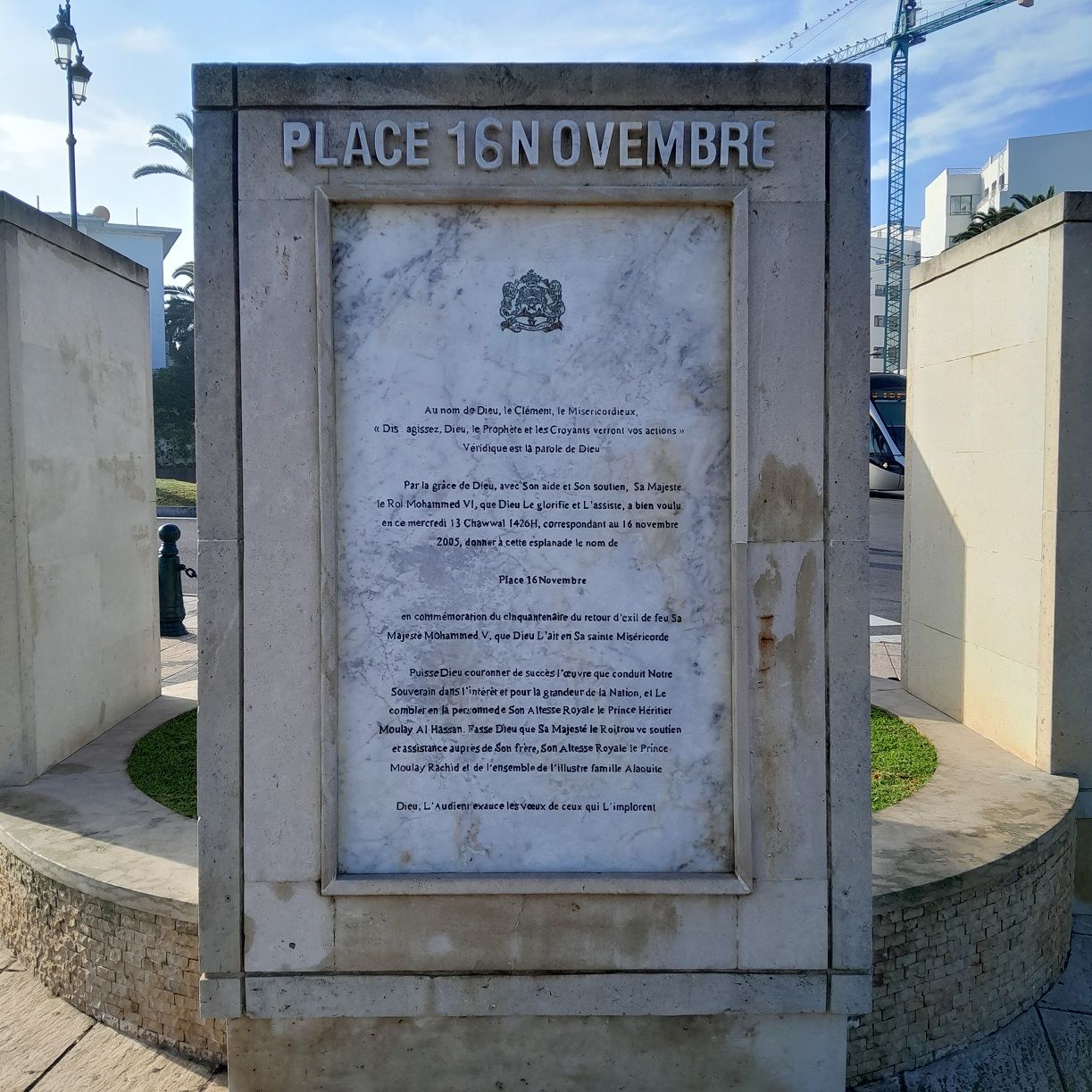
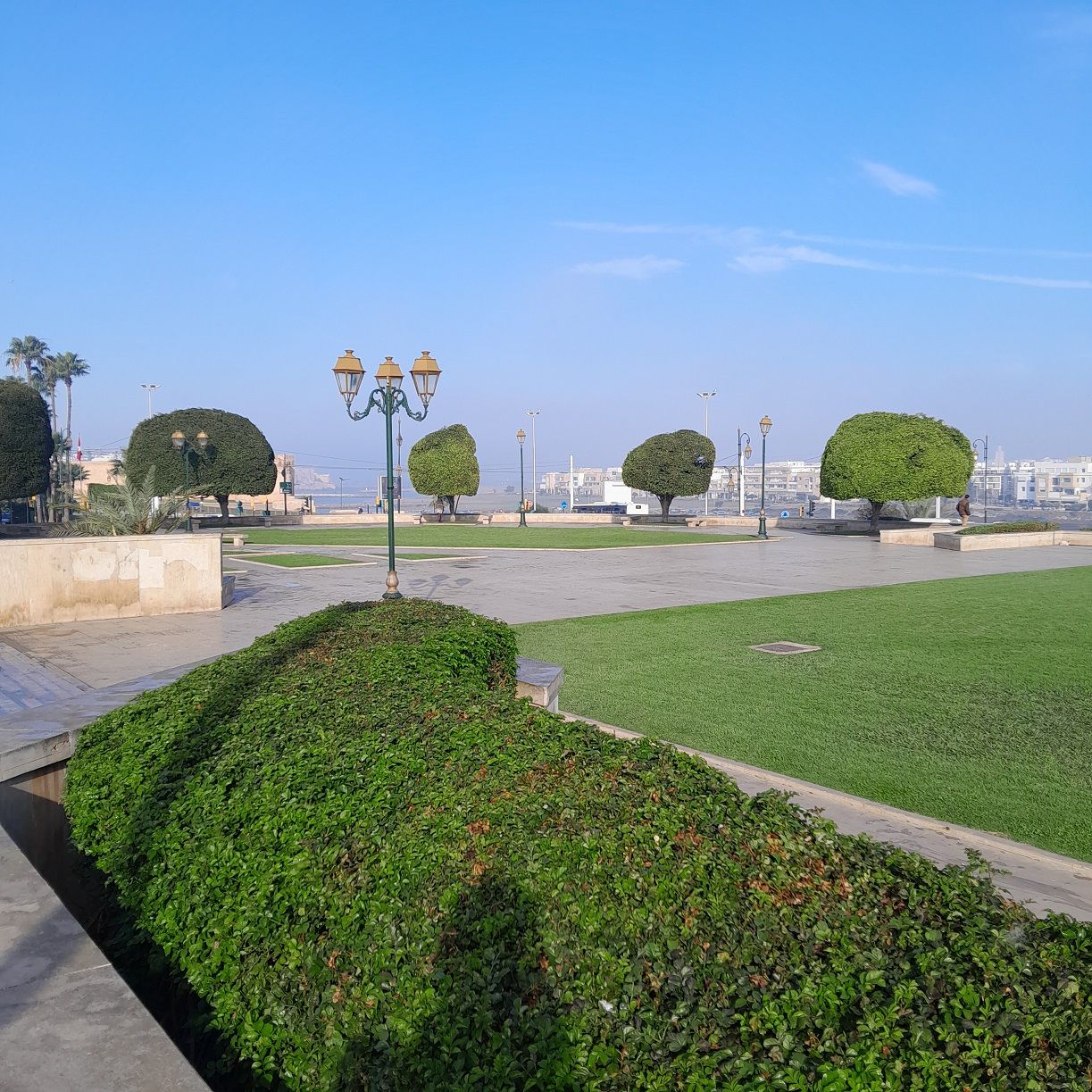
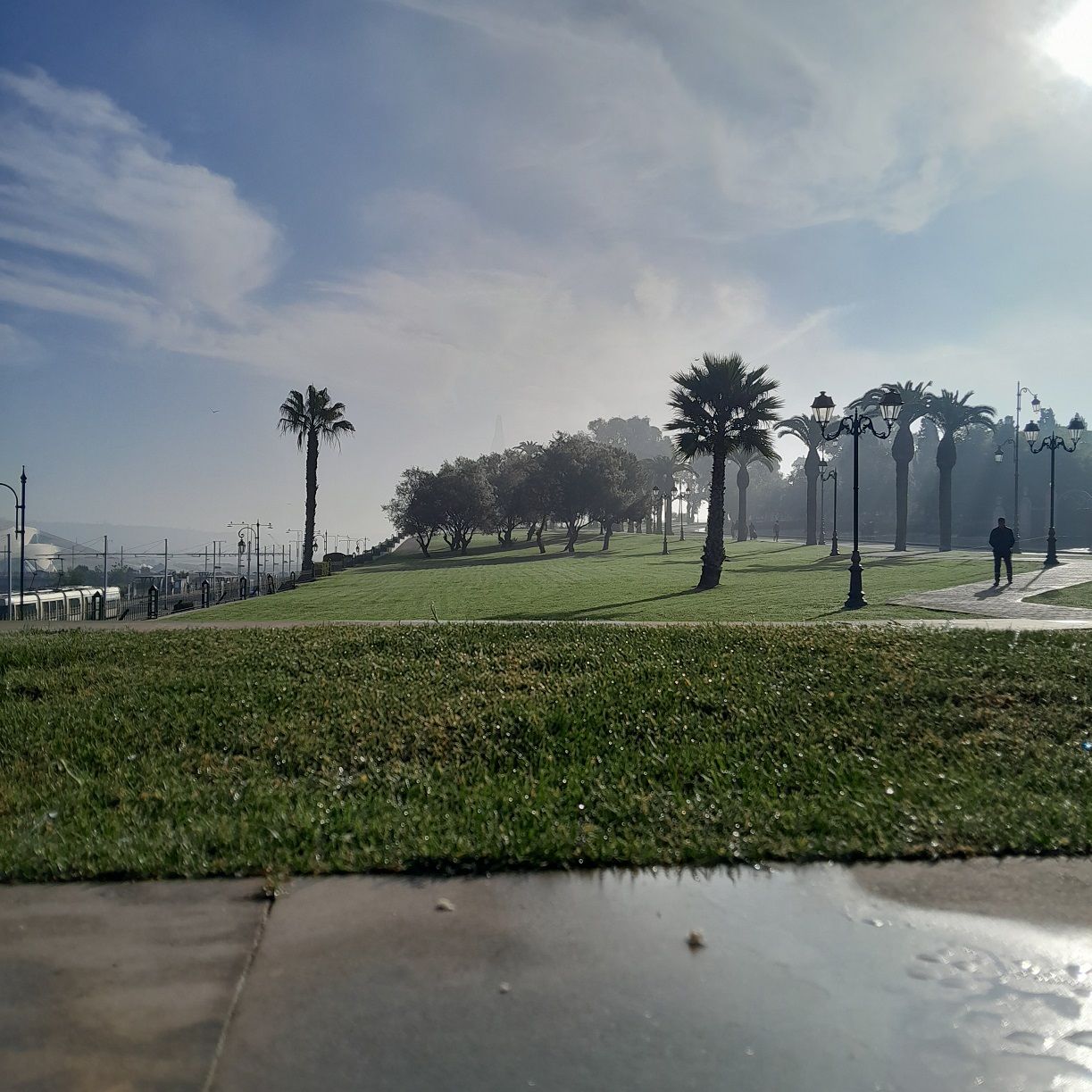
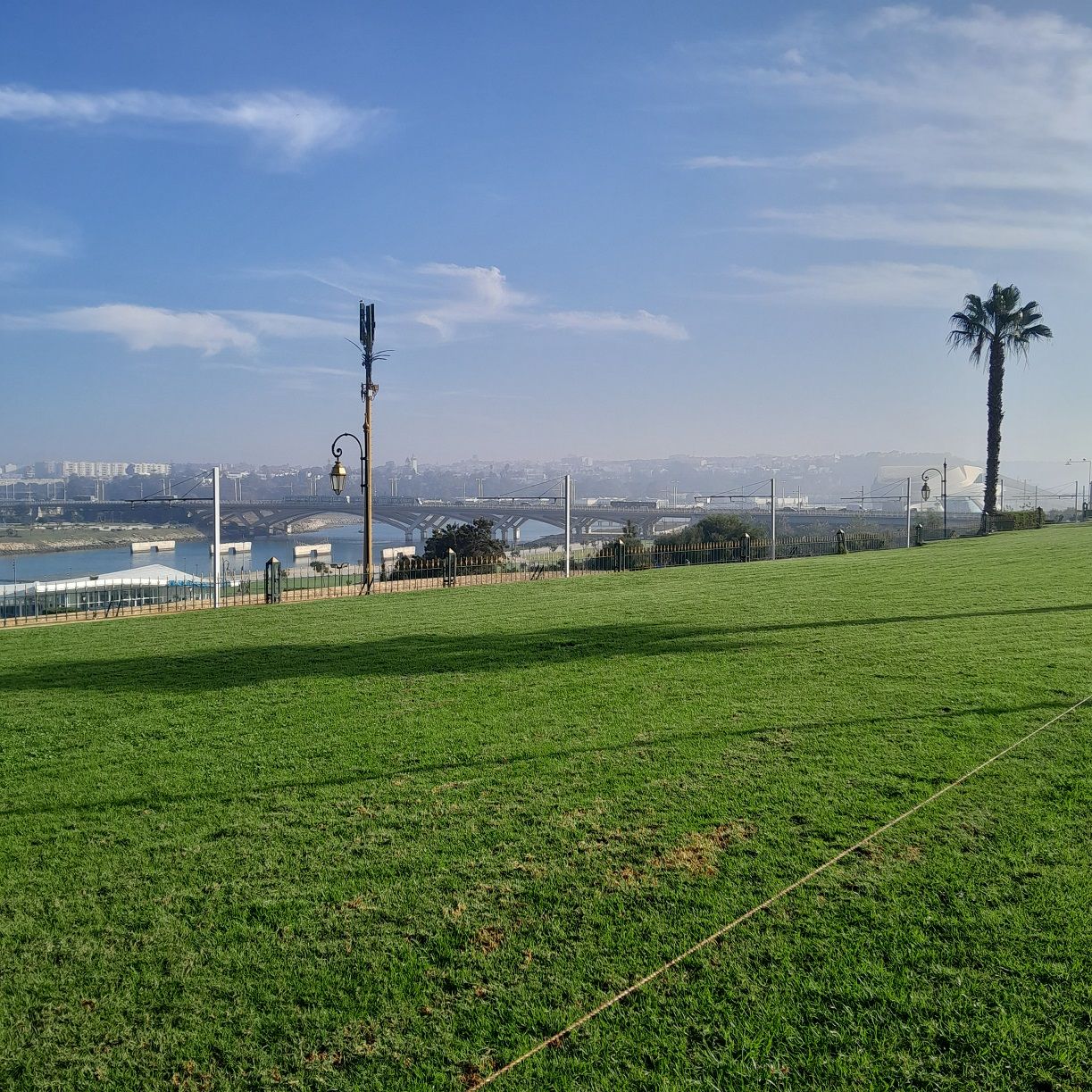
The Hassan Tower itself is impressive, with its unique architecture and the distinctive red stone used in its construction. Once I entered the main esplanade, what immediately struck me was the incredible number of columns dotted around the site.
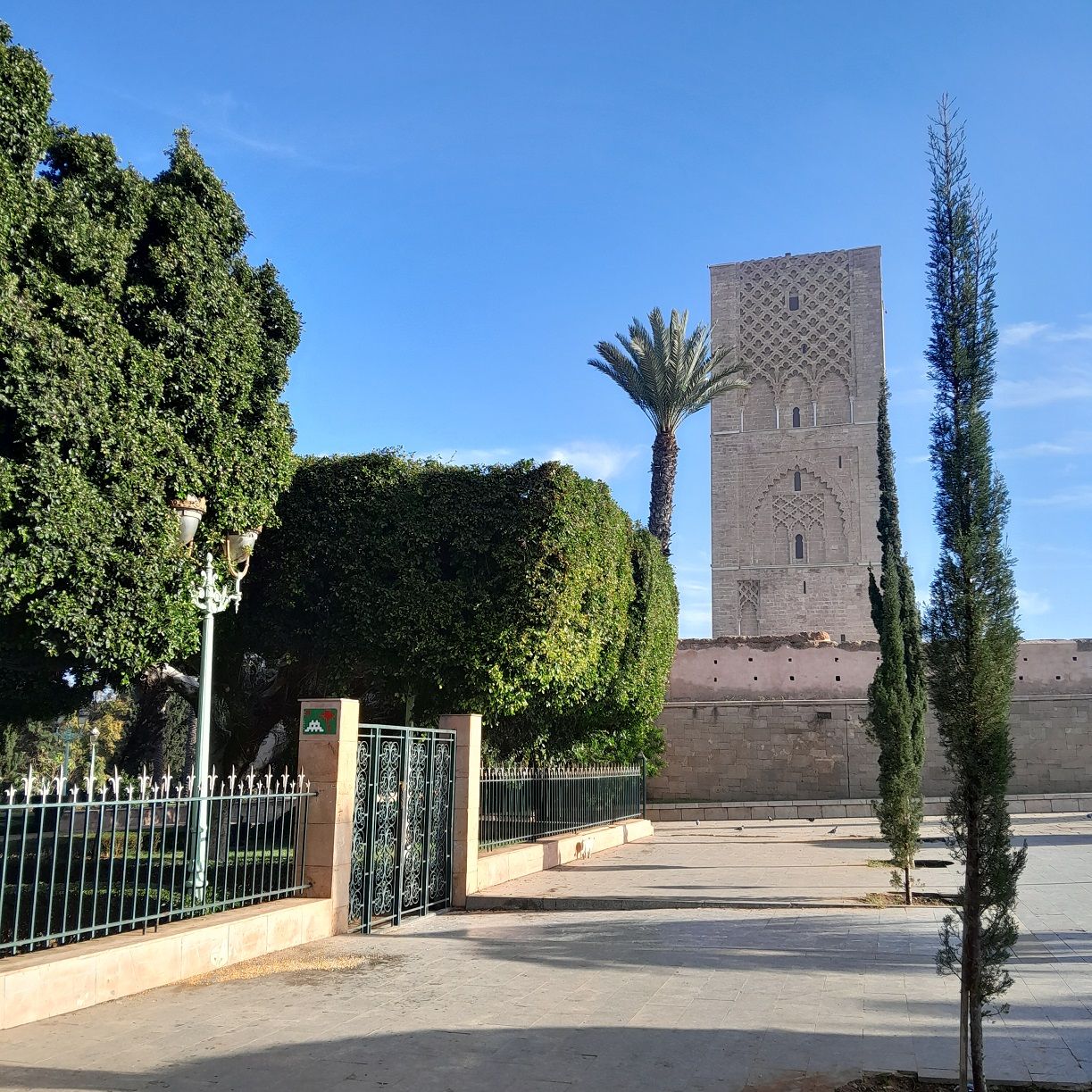

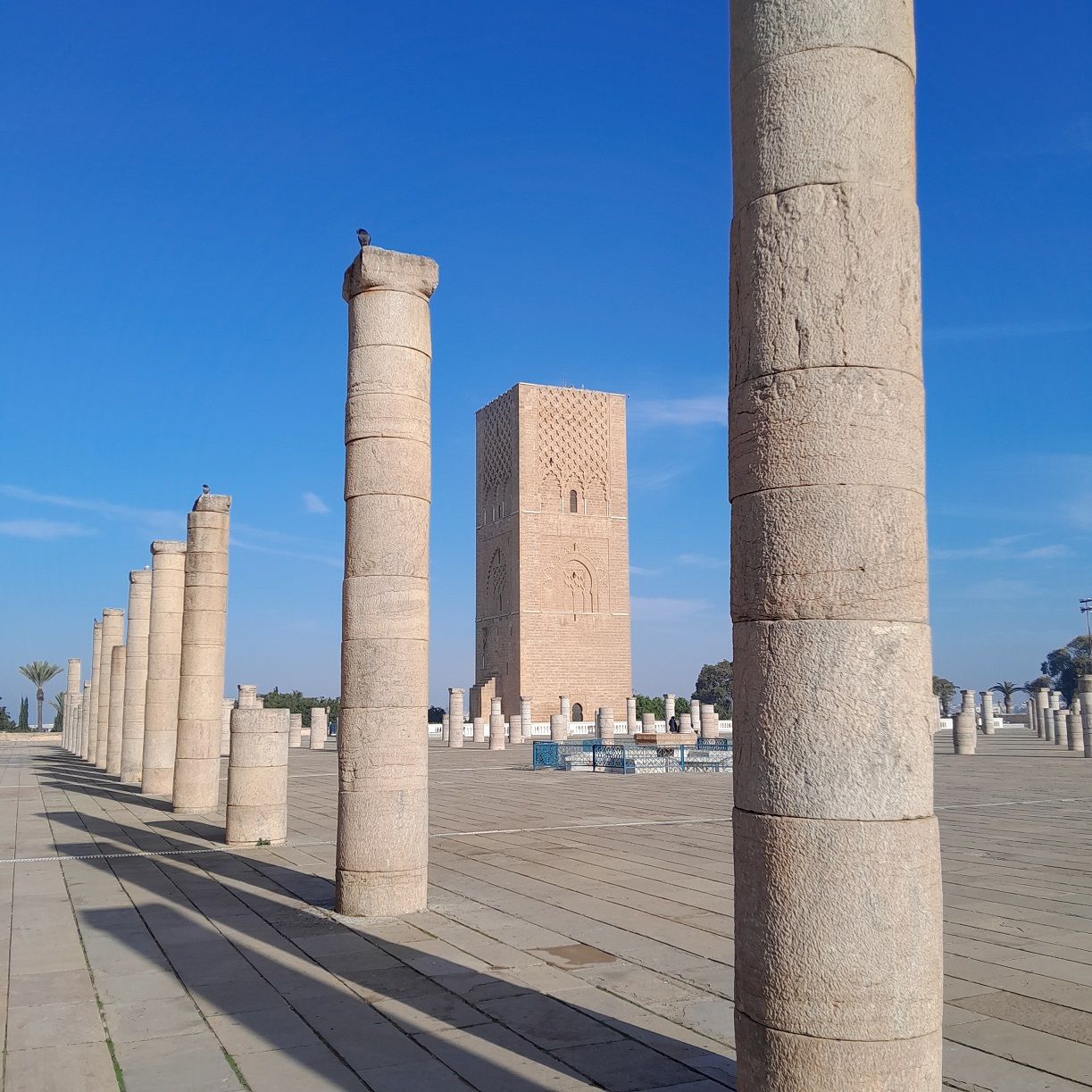
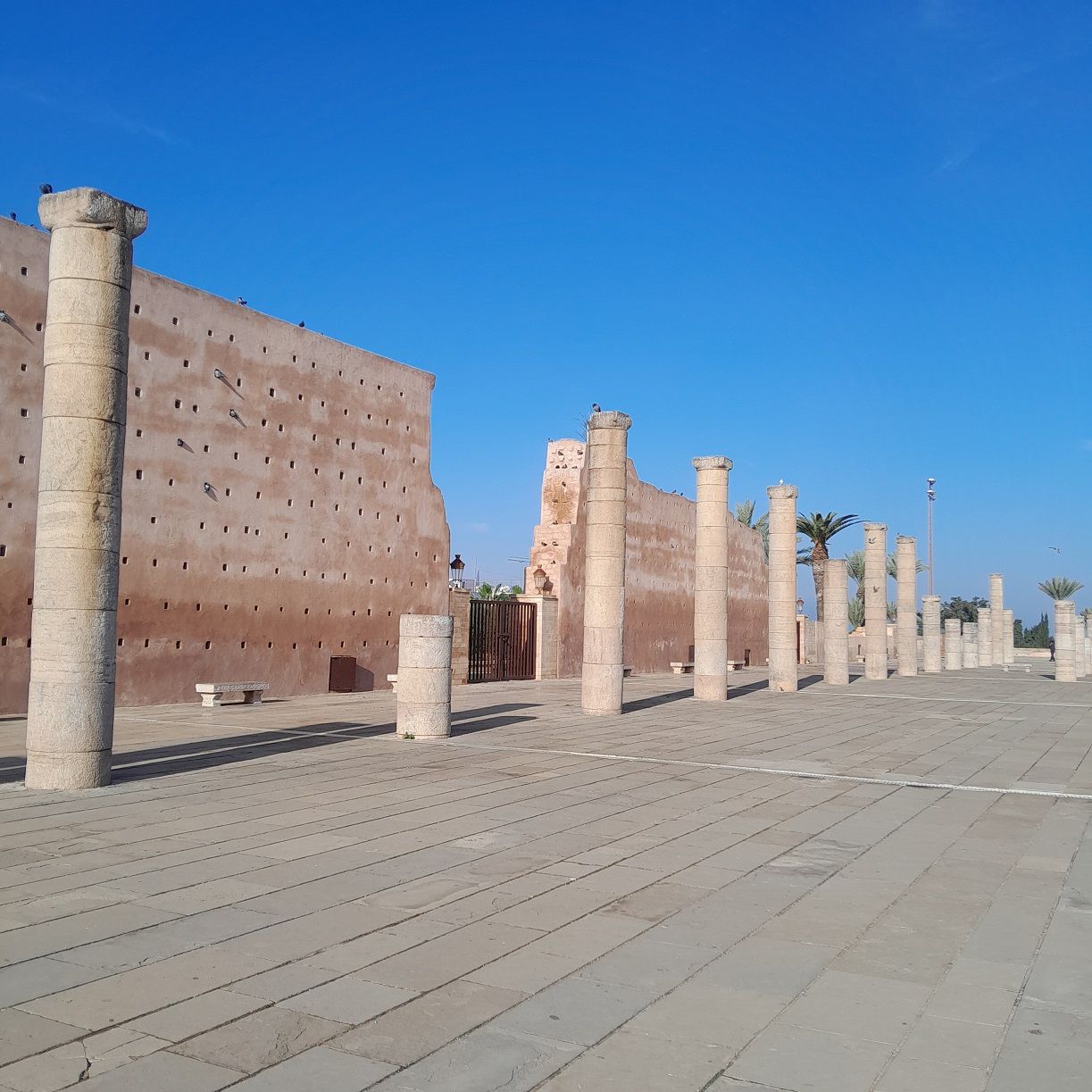
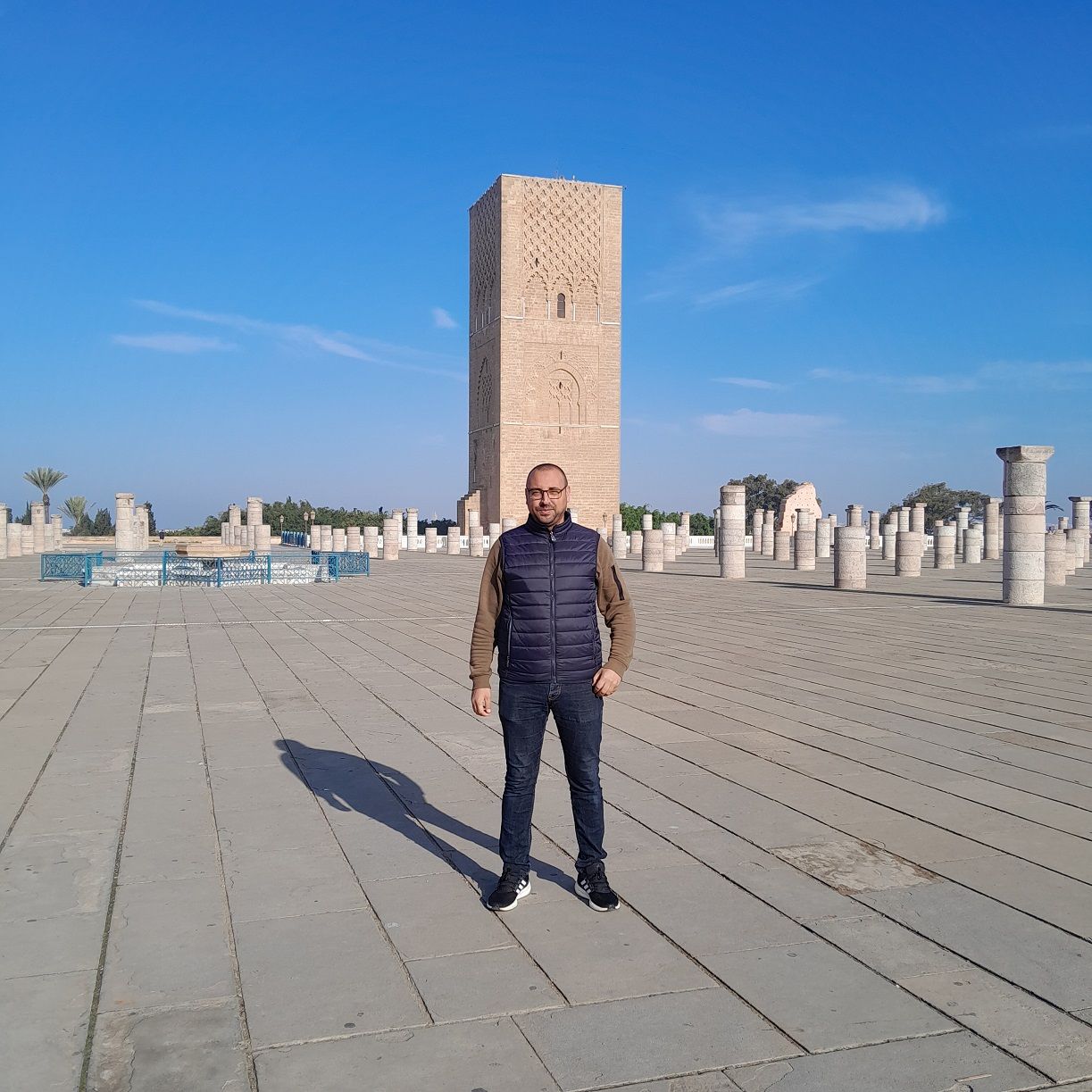
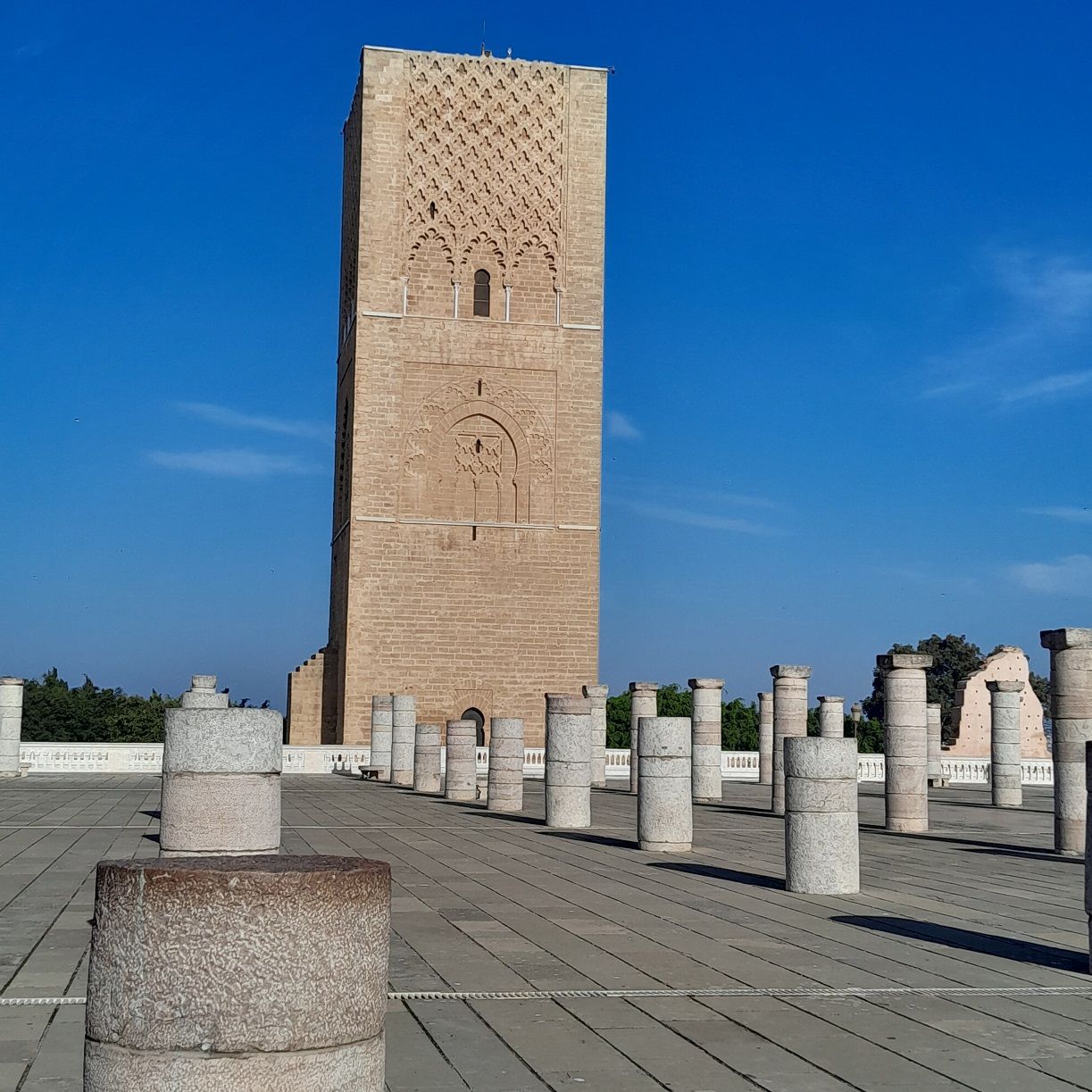
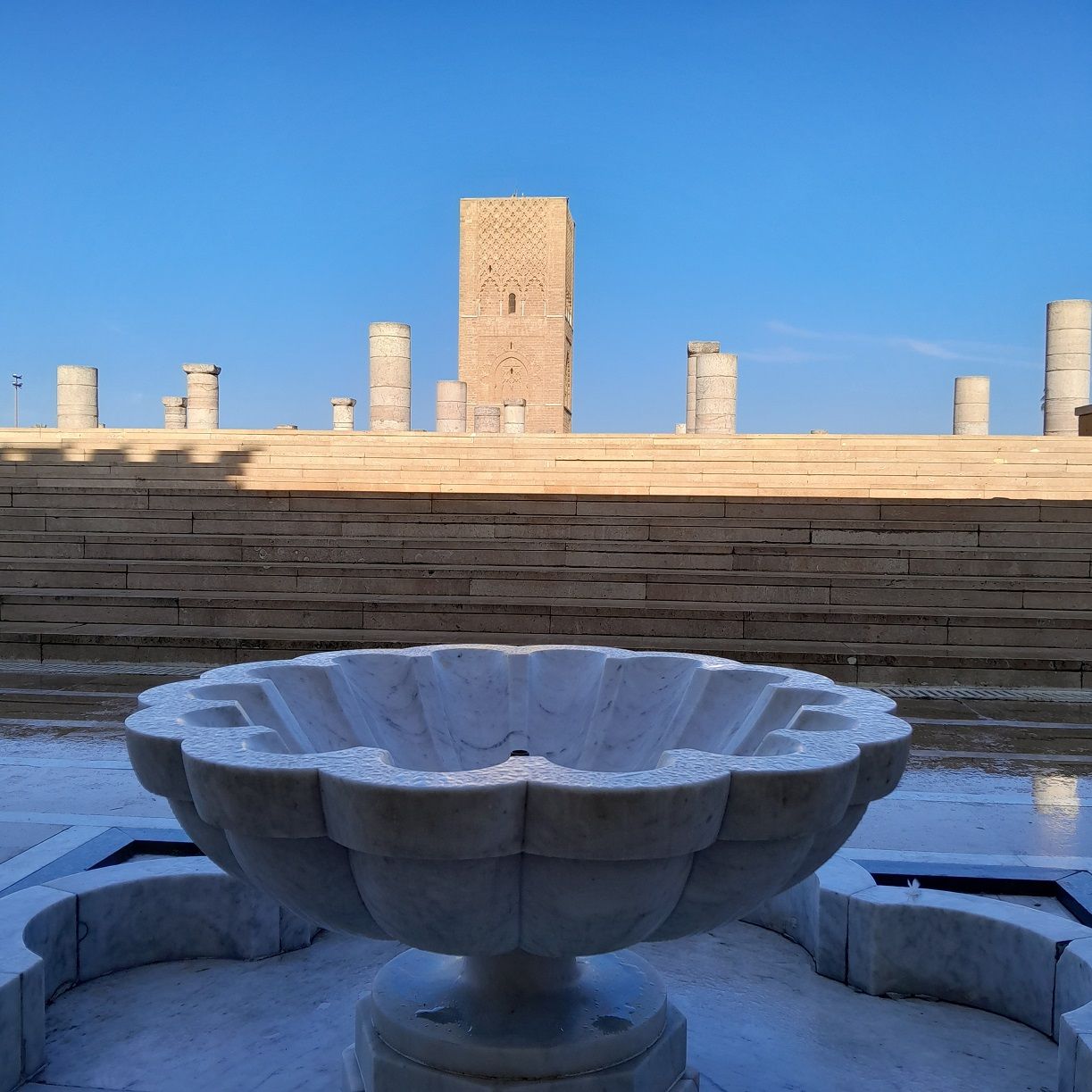
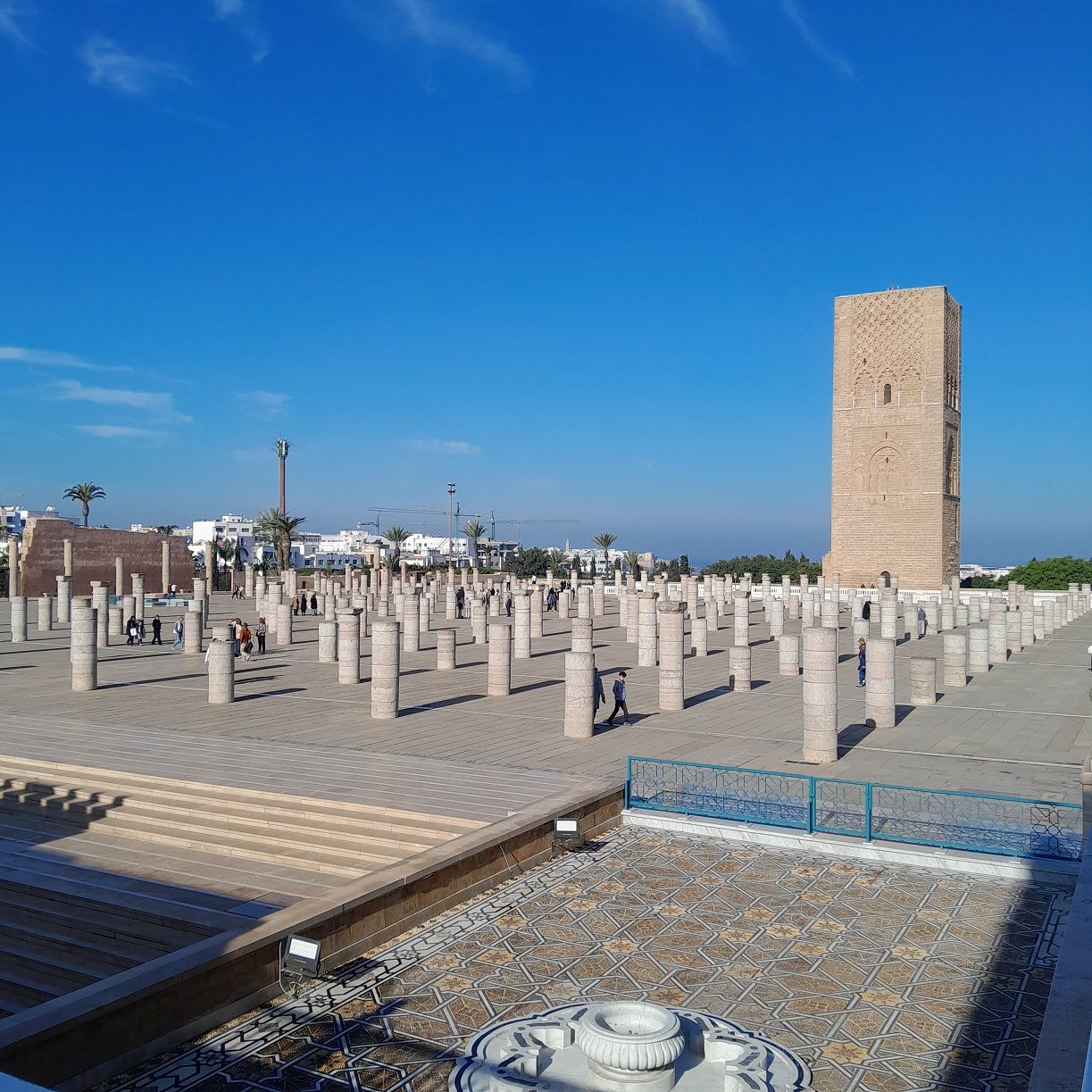
This Tower was begun by Sultan (King) Yacoub al-Mansour in the 12th century, with the ambition of creating the largest mosque in the world at the time. Unfortunately, construction was halted in 1199, after the sultan's death. What remains today is a majestic 44-metre tower, which was supposed to be almost 60 metres high.
The tower was intended to be the minaret of a huge mosque, but all that remains is this imposing structure, which offers a magnificent view of the city and the sea.
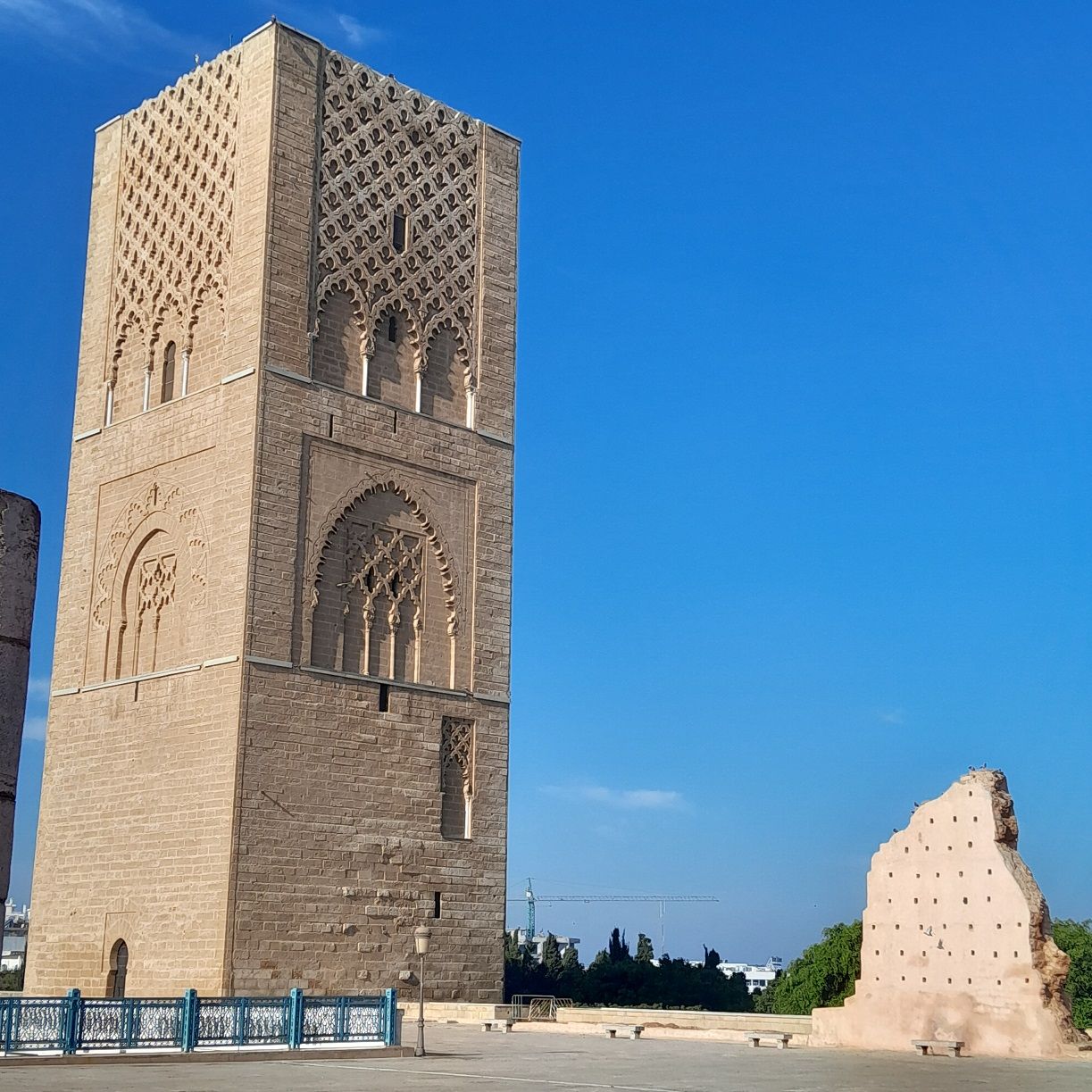
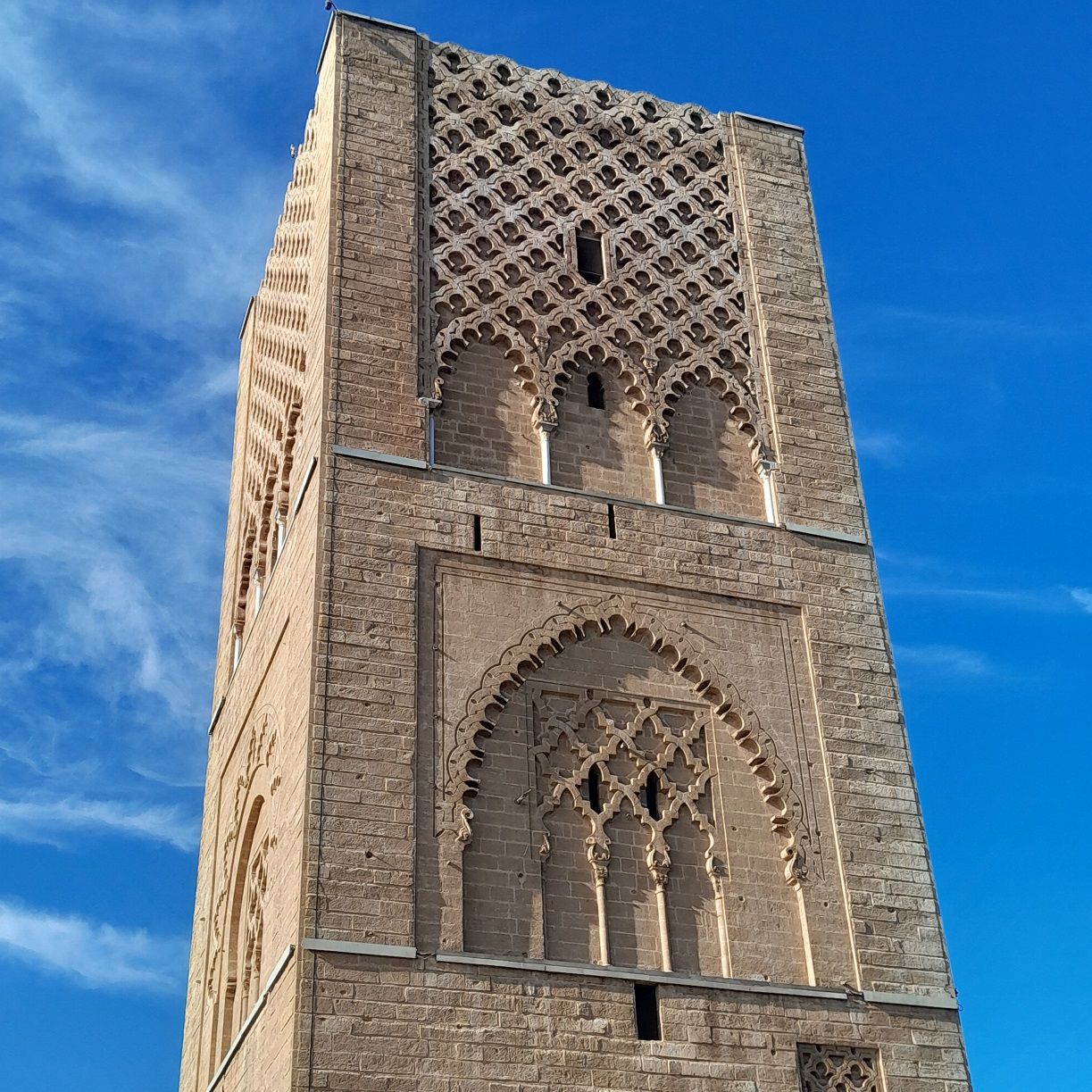
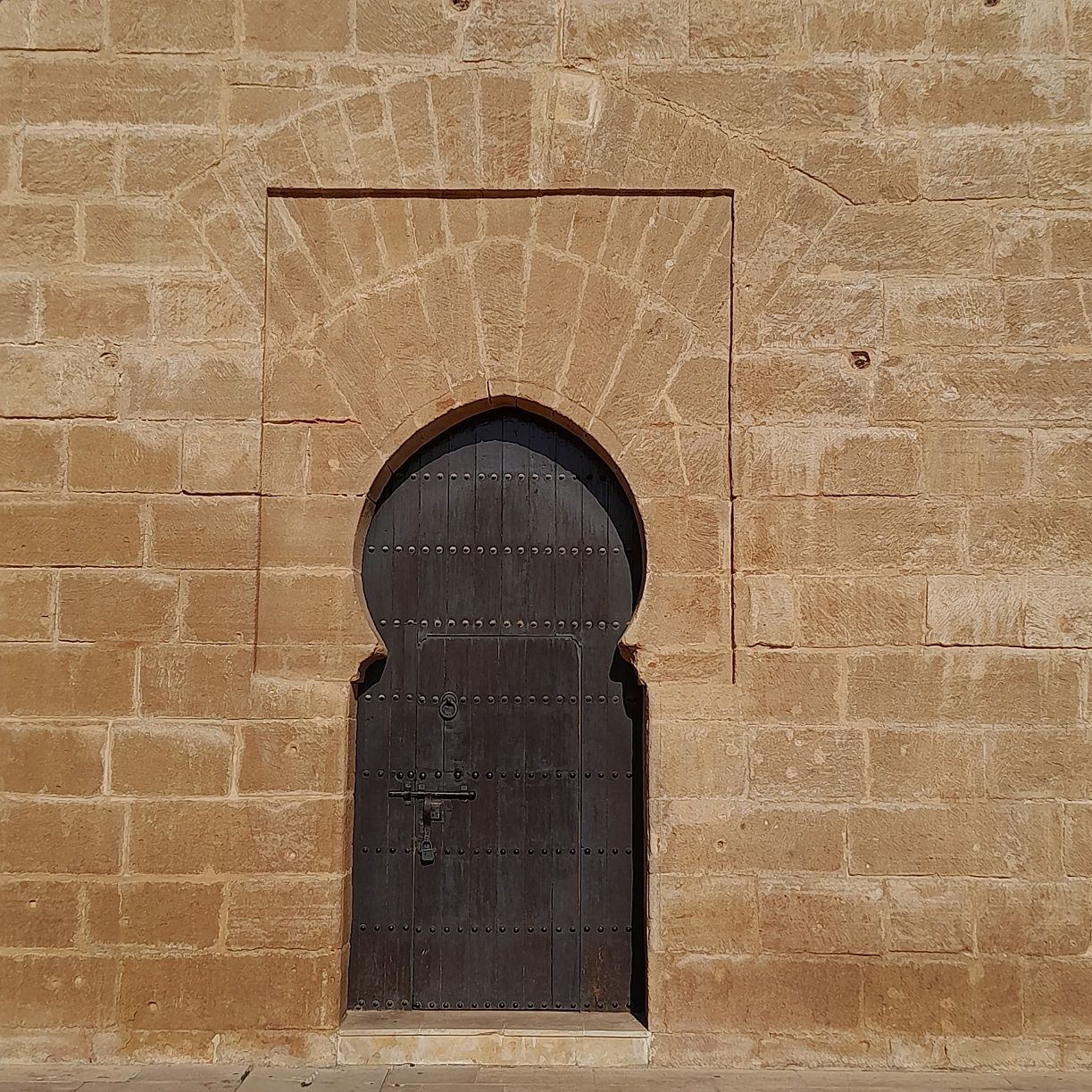
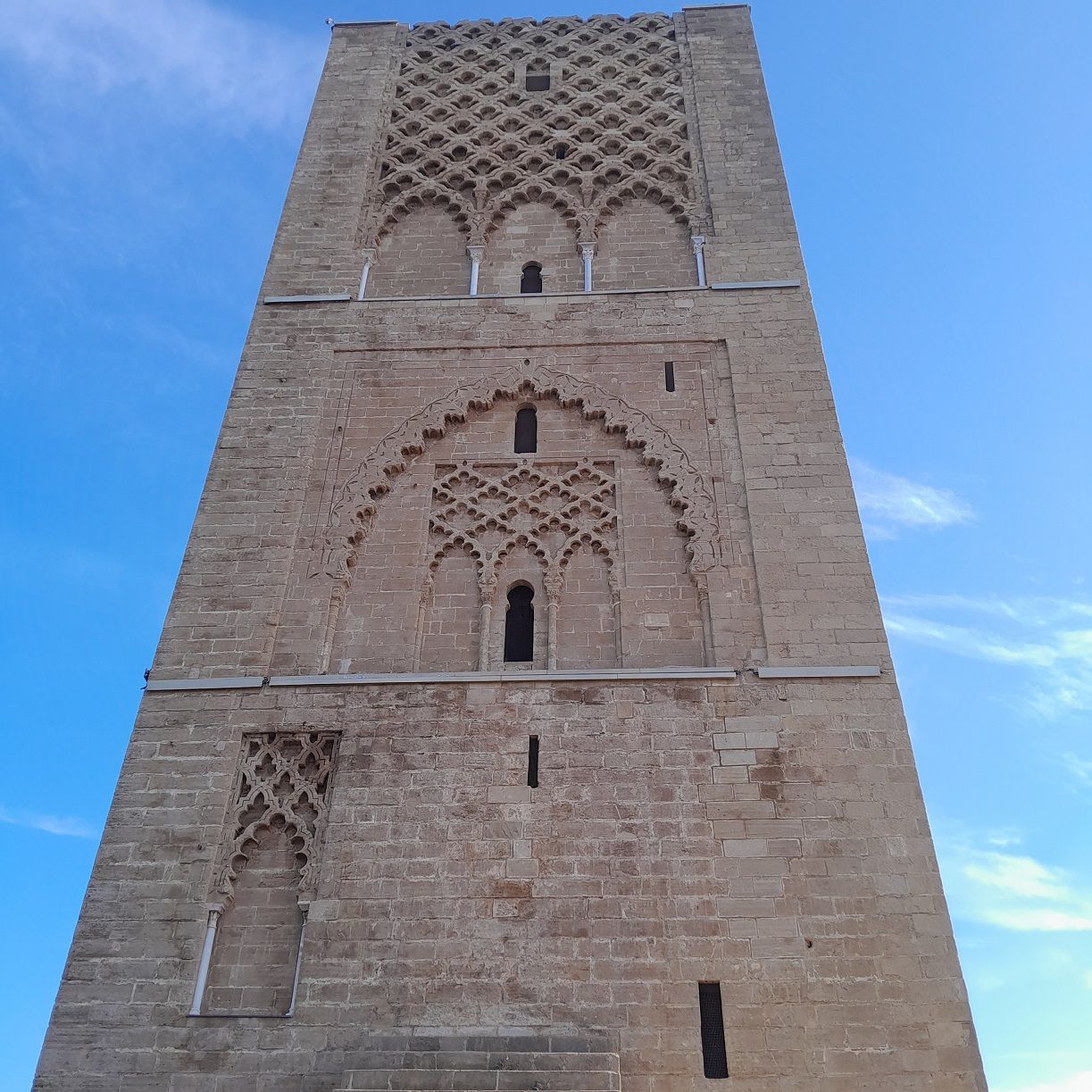
I stopped for a moment to think: if Sultan Yacoub Al Mansour had completed the construction of this immense mosque, of which the tower was a part, what would this place look like today?
I wandered between the marble columns scattered across the surrounding esplanade. I took lots of photos here, as these columns impose a mixture of admiration and serenity. Then I headed for the nearby fountain, where the sound of flowing water was like a gentle melody. I stopped for a moment to contemplate the place. The walls surrounding the tower also added an extra touch of charm to the visit. They were filled with free-flying pigeons, as if they were an integral part of the landscape.
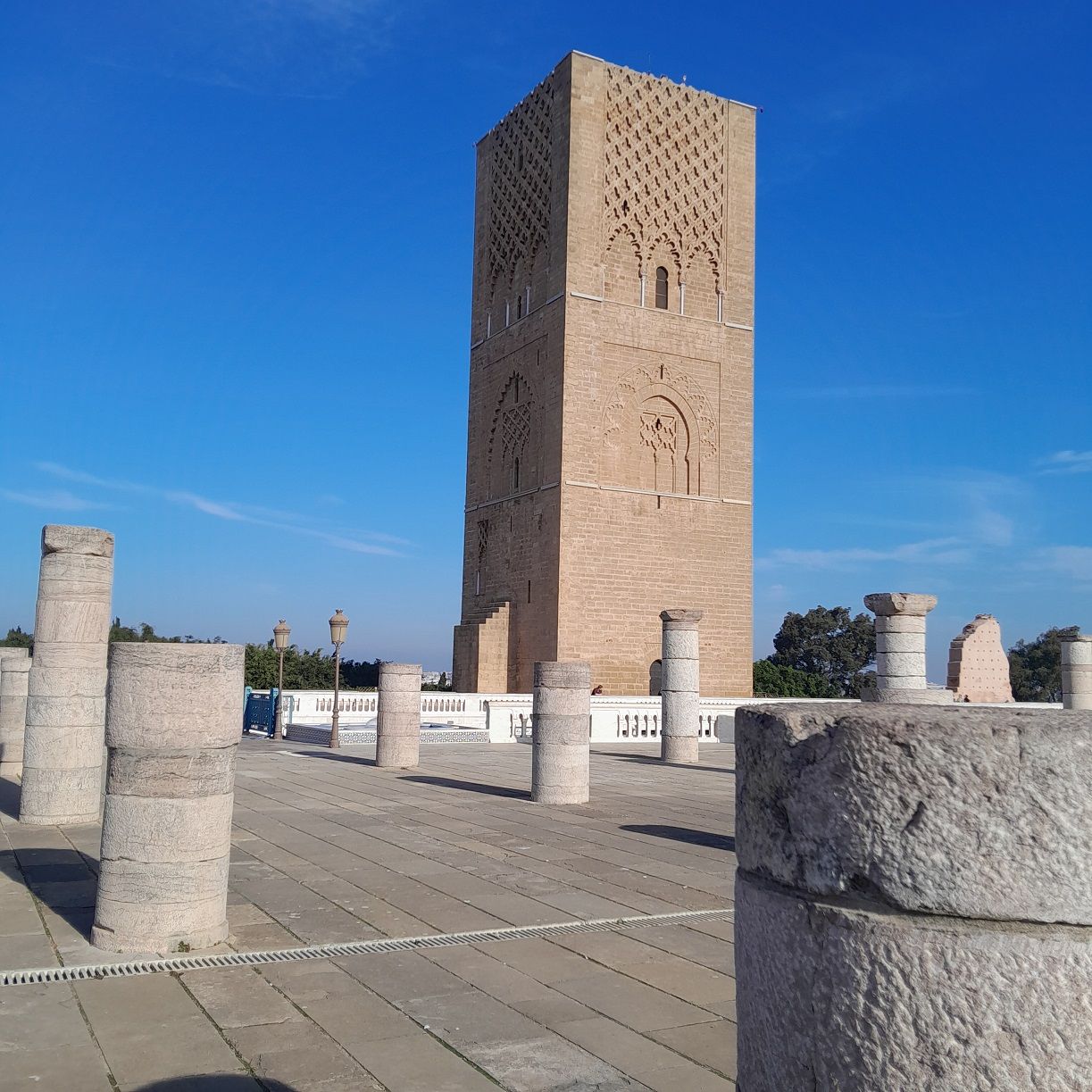
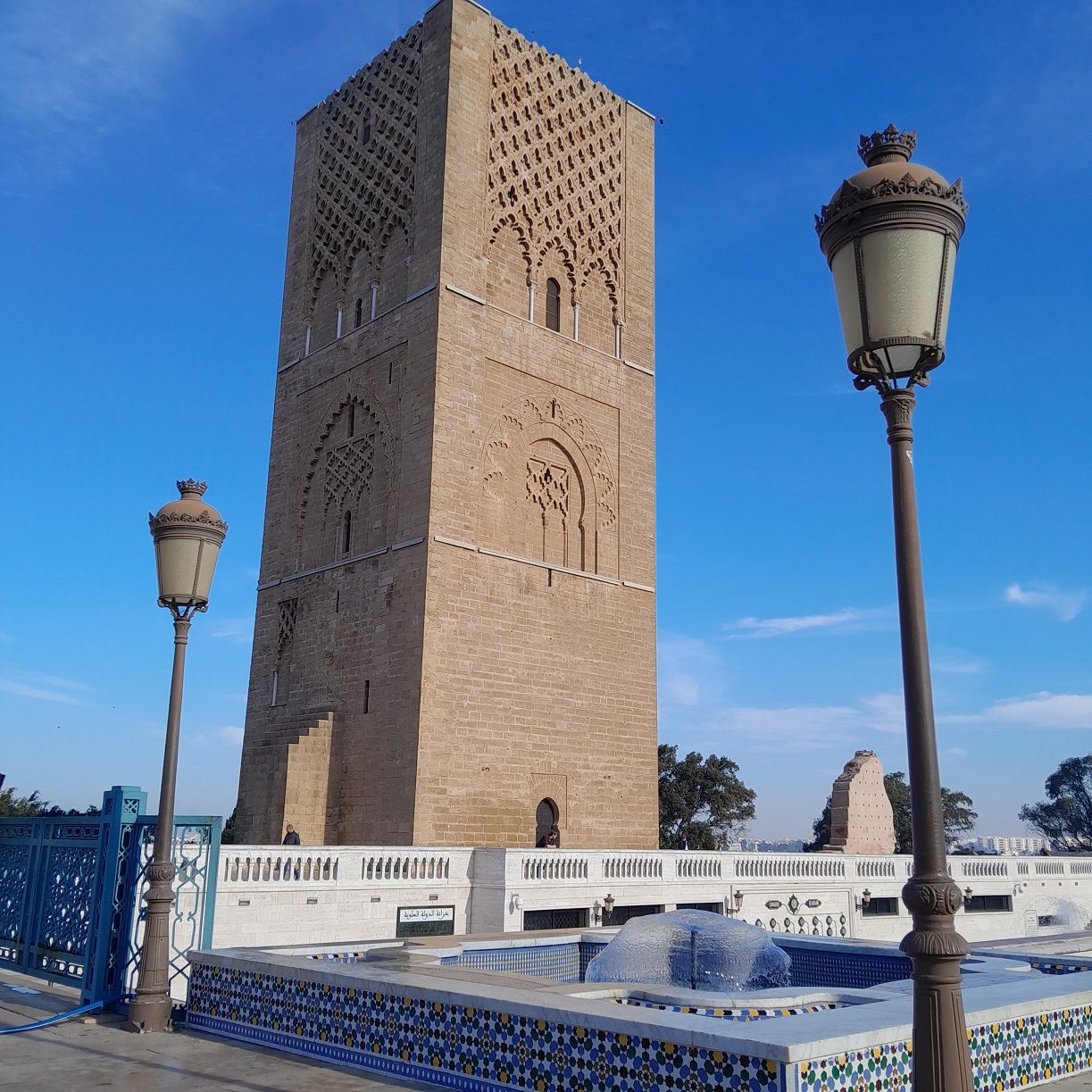
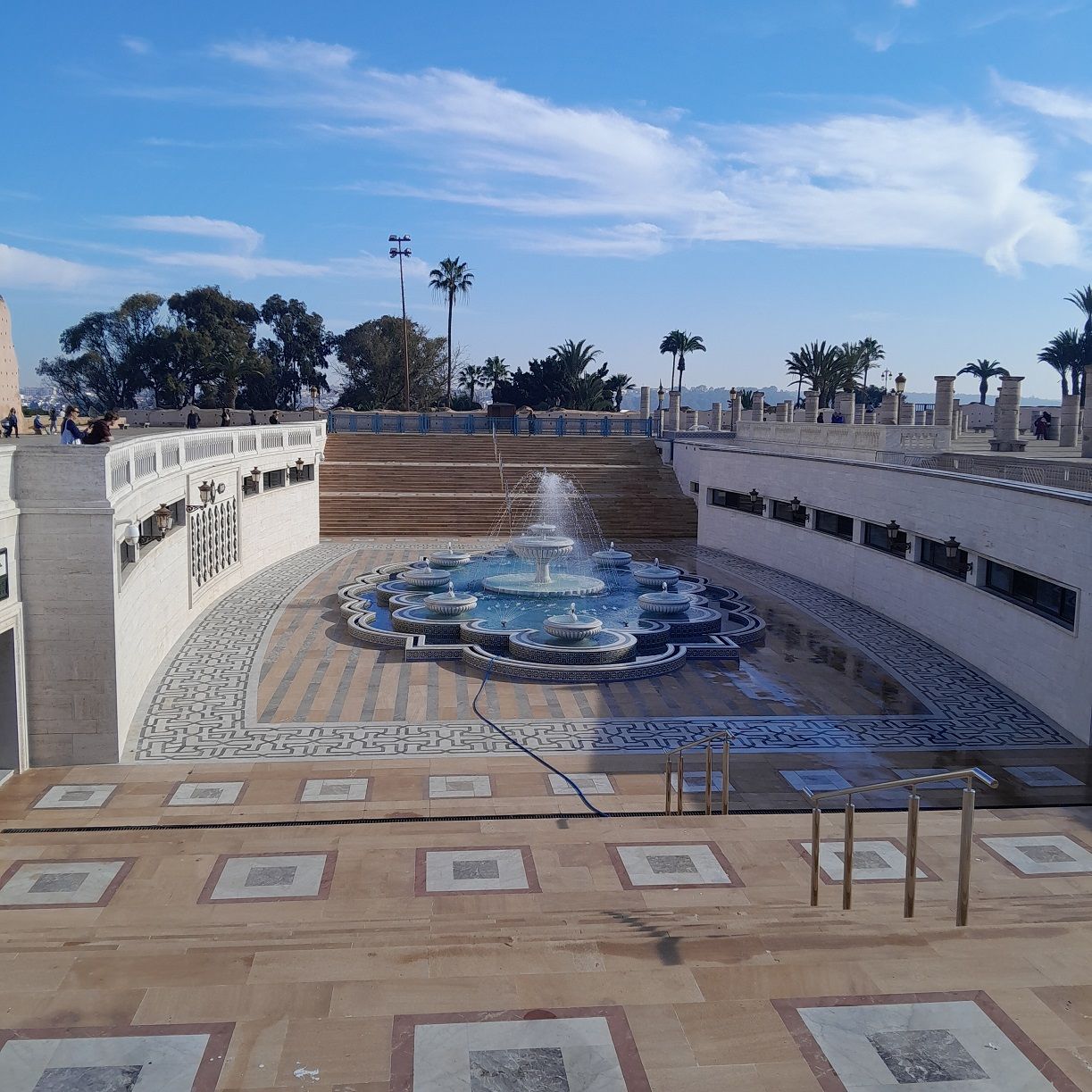
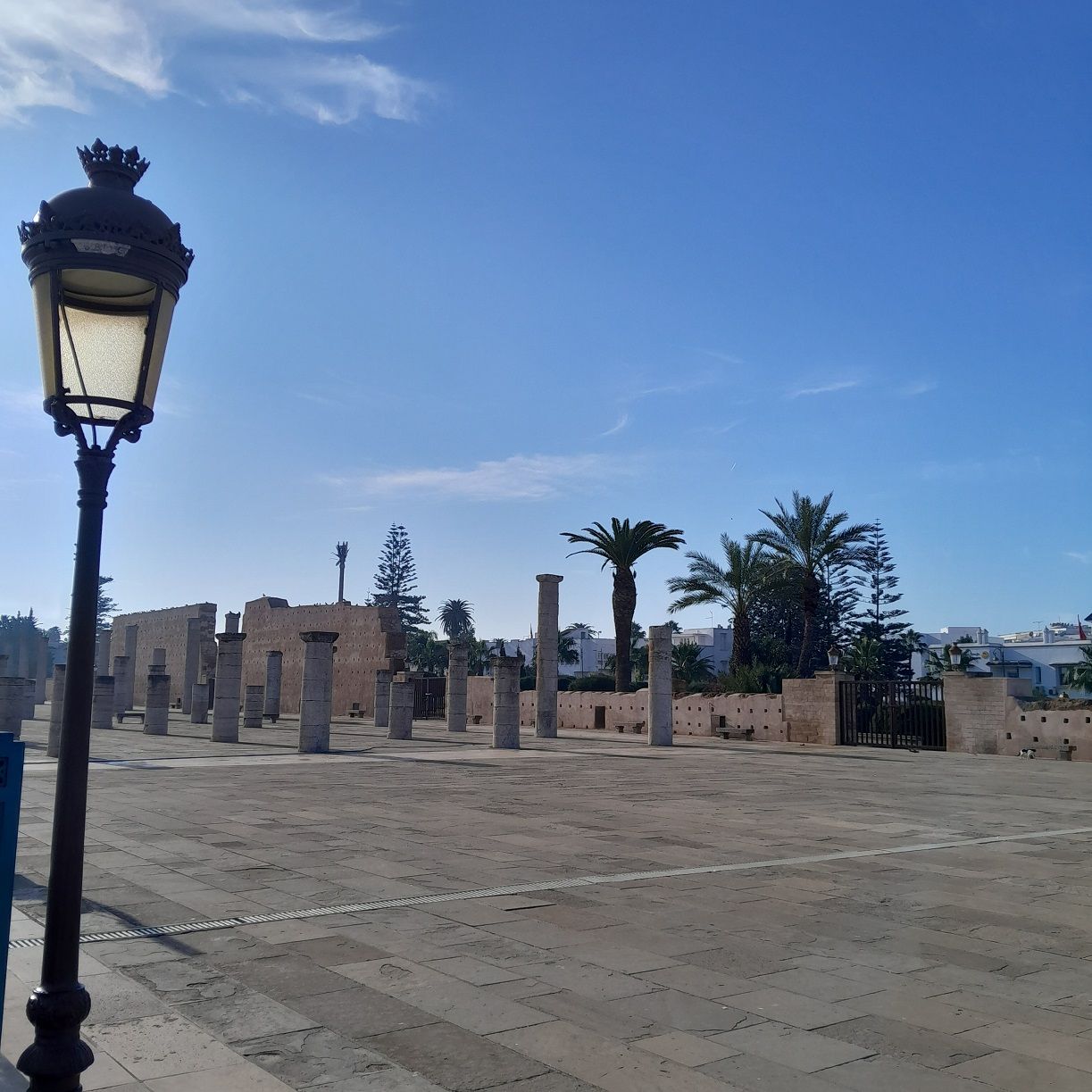
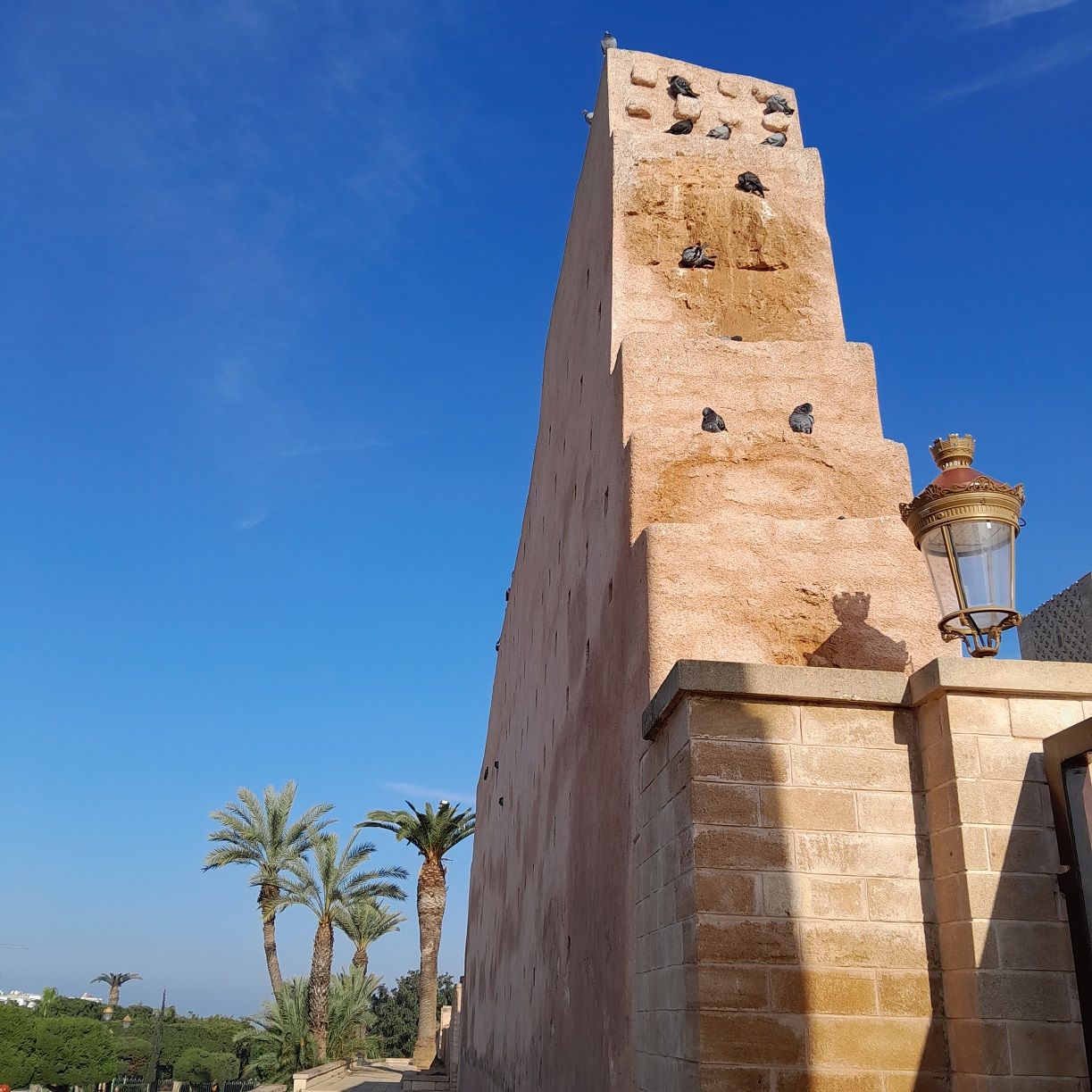
The tower we admire today was not just built for decoration. It played an important role in the defence of Rabat! For example, there's a story about a famous pirate who came with his fleet to attack Rabat, hoping to seize the city and, of course, its treasures. The most incredible thing about this story is the reaction of the people of Rabat at the time. Imagine ordinary people climbing to the top of the tower to watch the pirates' movements in the distance. They watched their movements vigilantly and, from up there, raised the alarm with shouts to warn the other inhabitants to prepare for the attack.... It was a decisive moment. After these warnings from the tower, the inhabitants gathered in the alleyways, and even those who knew how to fight came out to confront the pirates. There were fierce fights, but in the end, the inhabitants drove the pirates back and forced them to return to the sea.
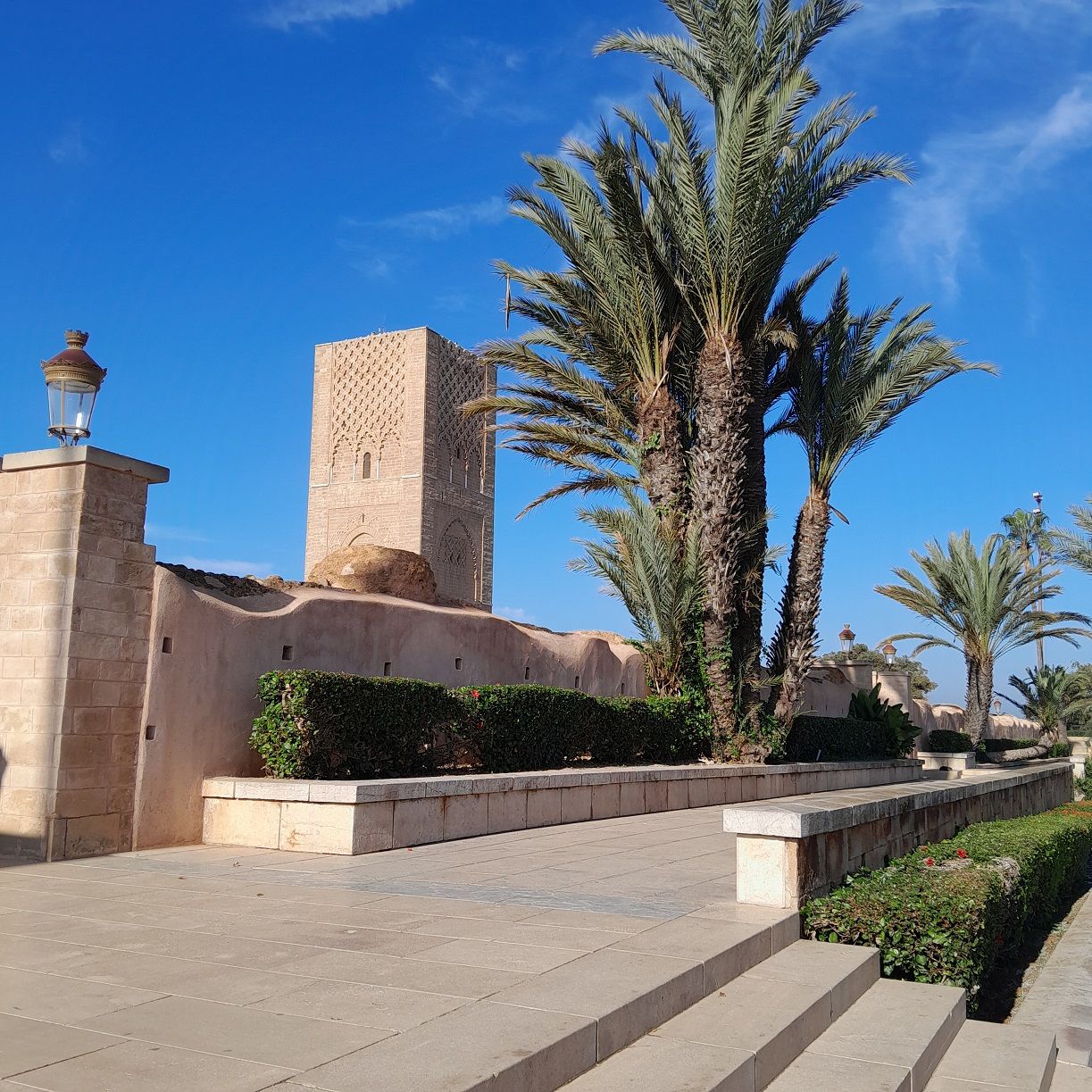
Restoring the Hassan Tower was a real challenge, but also a source of great pride for the teams who worked on it. Before work could begin, three years of in-depth studies were required.
The project had two simple but essential aims: to clean and consolidate the tower. For the cleaning, they used a gentle method, combining steam and fine sand, so as not to damage the stone. Consolidation stabilised the building, even though its foundations, laid on solid rock, have proved their robustness in the face of centuries of history, including the Lisbon earthquake of 1755!
The work, which lasted 18 months, was carried out by a Moroccan company specialising in restoration. A real source of national pride, with talented craftsmen from Fes bringing this monument back to life. And the results are in: the tower has been rejuvenated and now shines with a new lustre, adding to the beauty and heritage of Rabat.
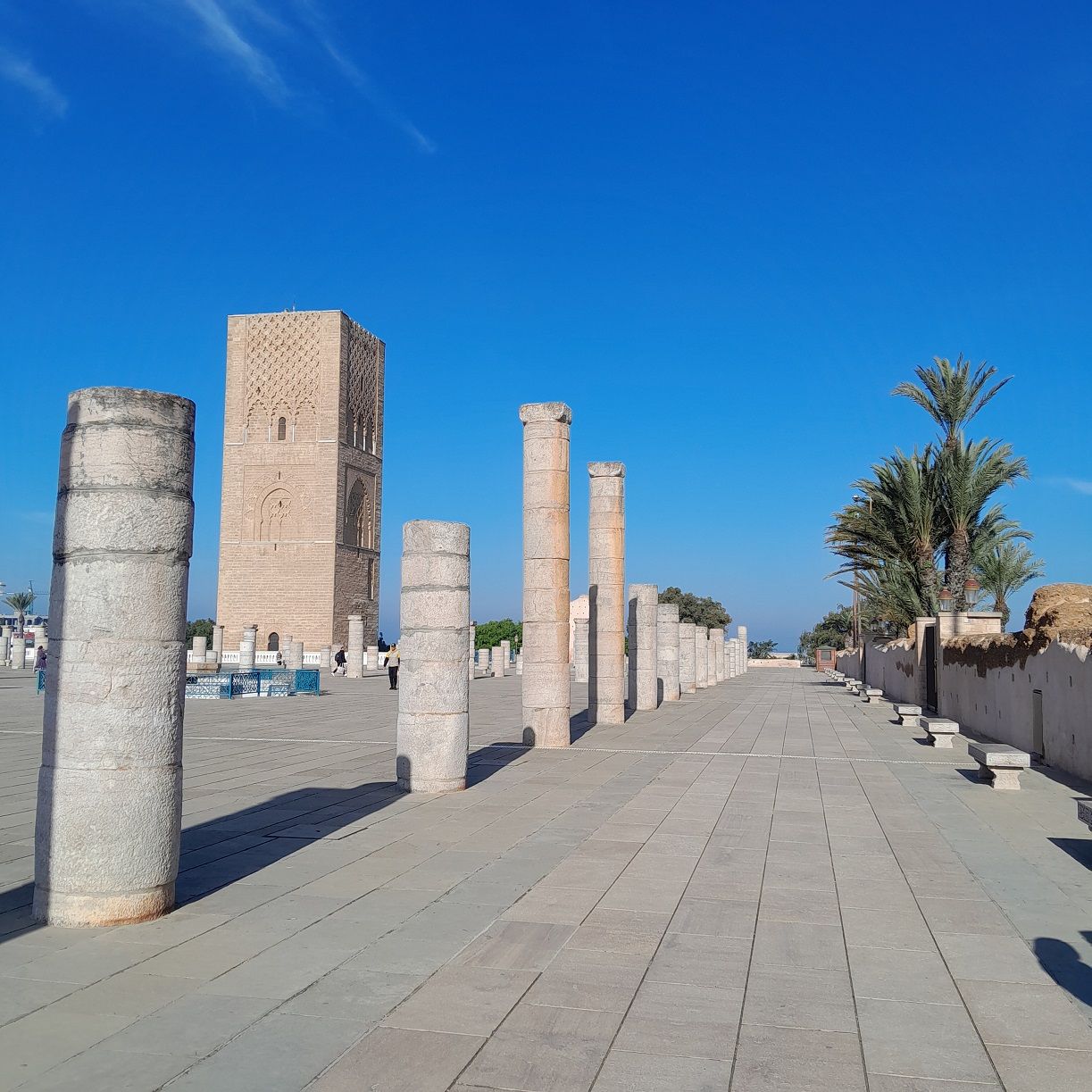
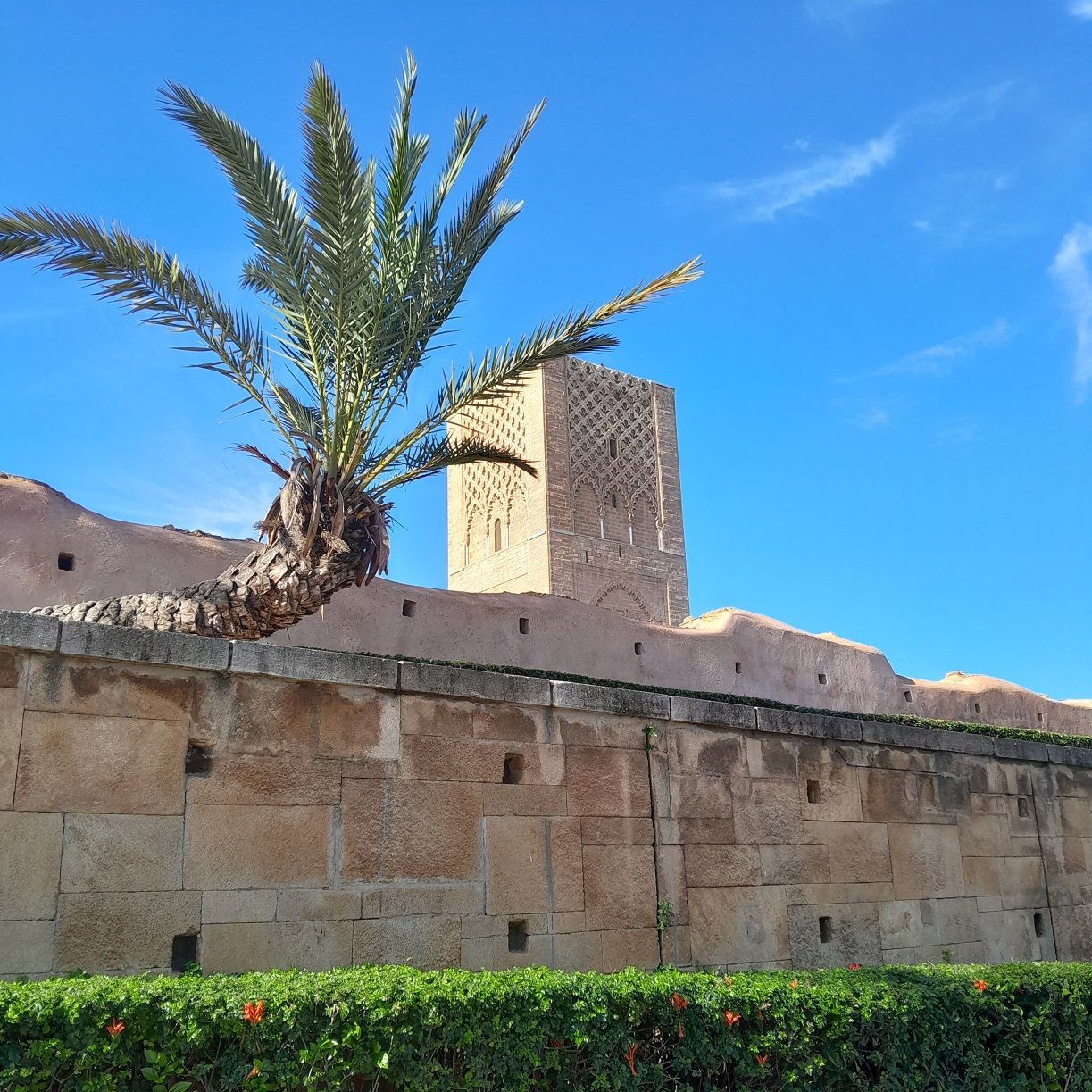
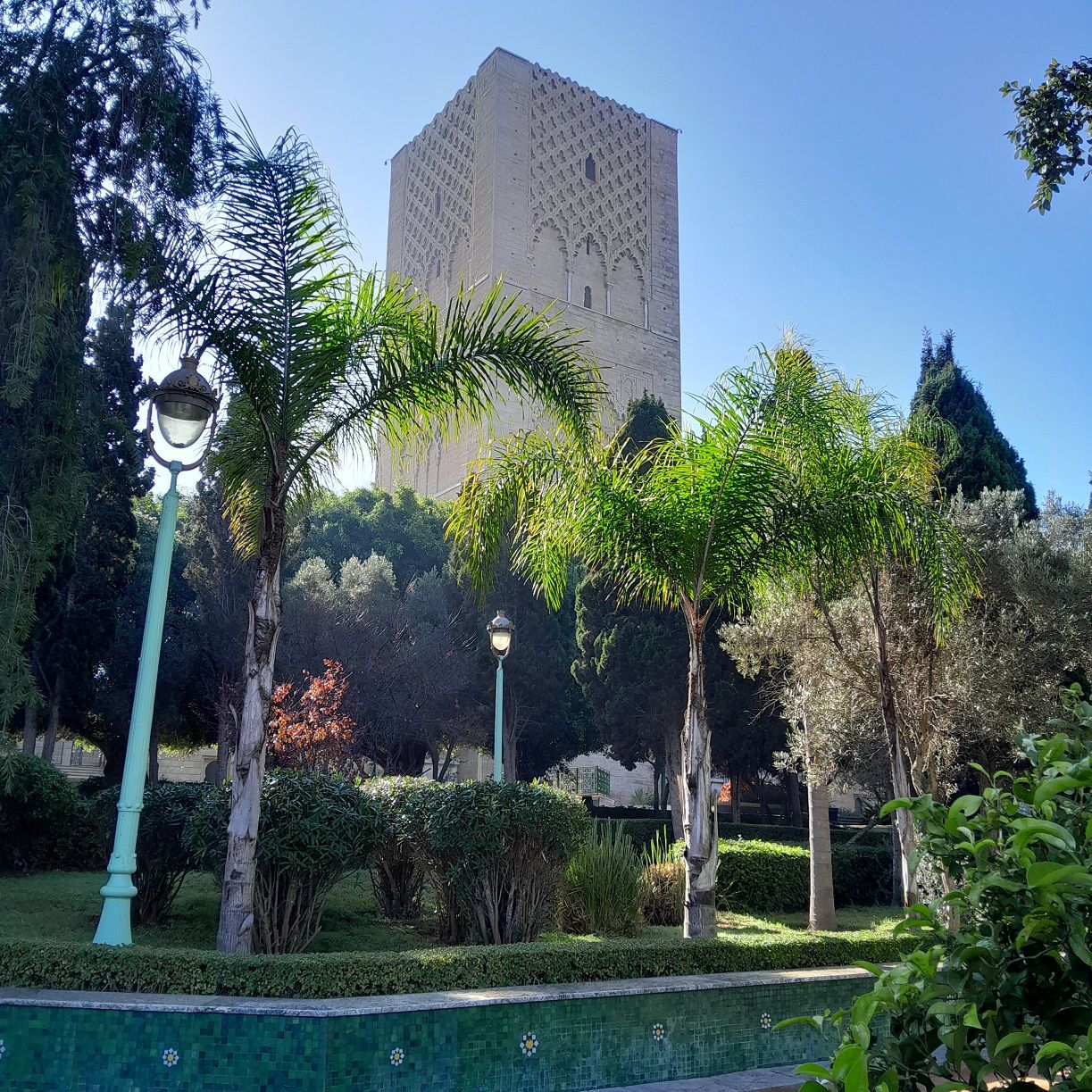
I wish I could have sat here for hours, just to observe this fusion of history and nature. My stroll would not be complete without passing between the palm trees that encircle the tower, while the adjacent garden offers the perfect refuge for a rest.
Right next to the Hassan Tower is the Mohamed 5 Mausoleum!
King Mohammed 5 (grandfather of Morocco's current King Mohamed 6) and his sons, King Hassan II and Prince Abdallah, are buried here. It is a national pilgrimage site, symbolising the respect and tribute paid to these major figures in Morocco's history.
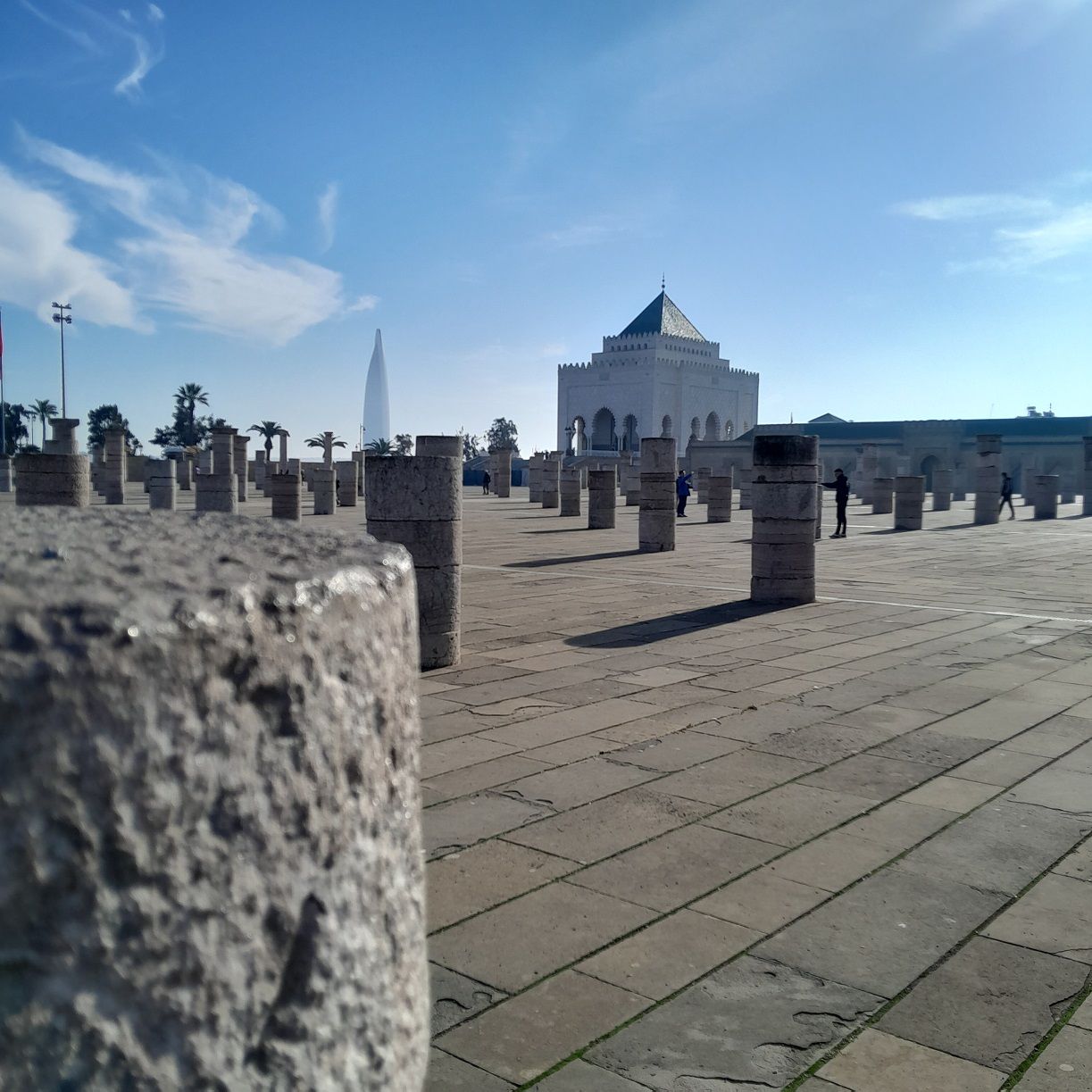
This photo I took of this place is magnificent! It captures so well the essence of Rabat, where past and present come together harmoniously. In the foreground, you can see the majestic columns. And right there, in the centre of the image, stands the splendid Mohammed 5 Mausoleum, with its arches and white marble.
And looking off into the distance, you can see the Borj Mohammed 6. This modern tower stands proud against the blue sky, symbolising the progress and innovation of contemporary Morocco. The contrast between the historic mausoleum and the modern tower is simply fascinating.
Now let's take a look in the Mausoleum
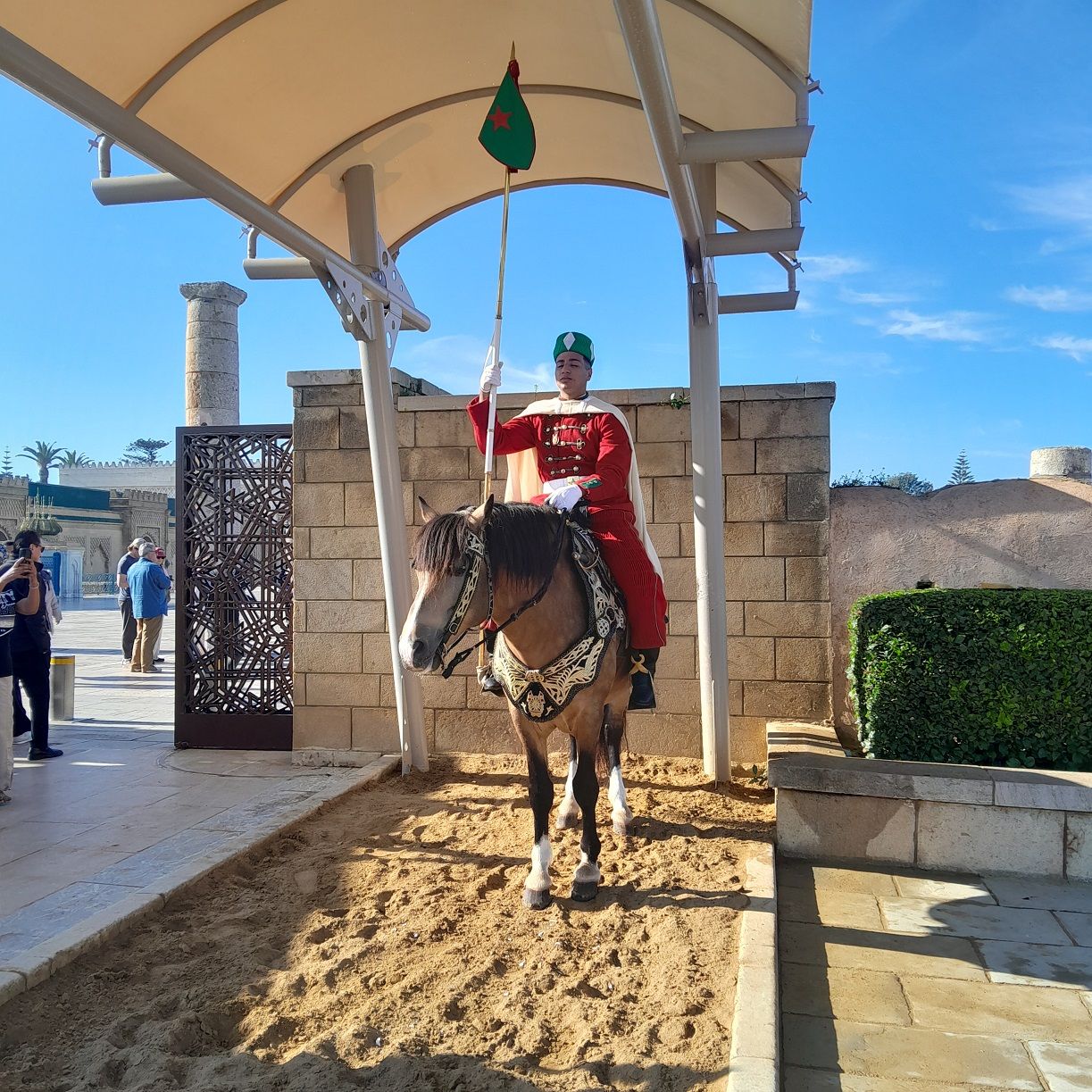
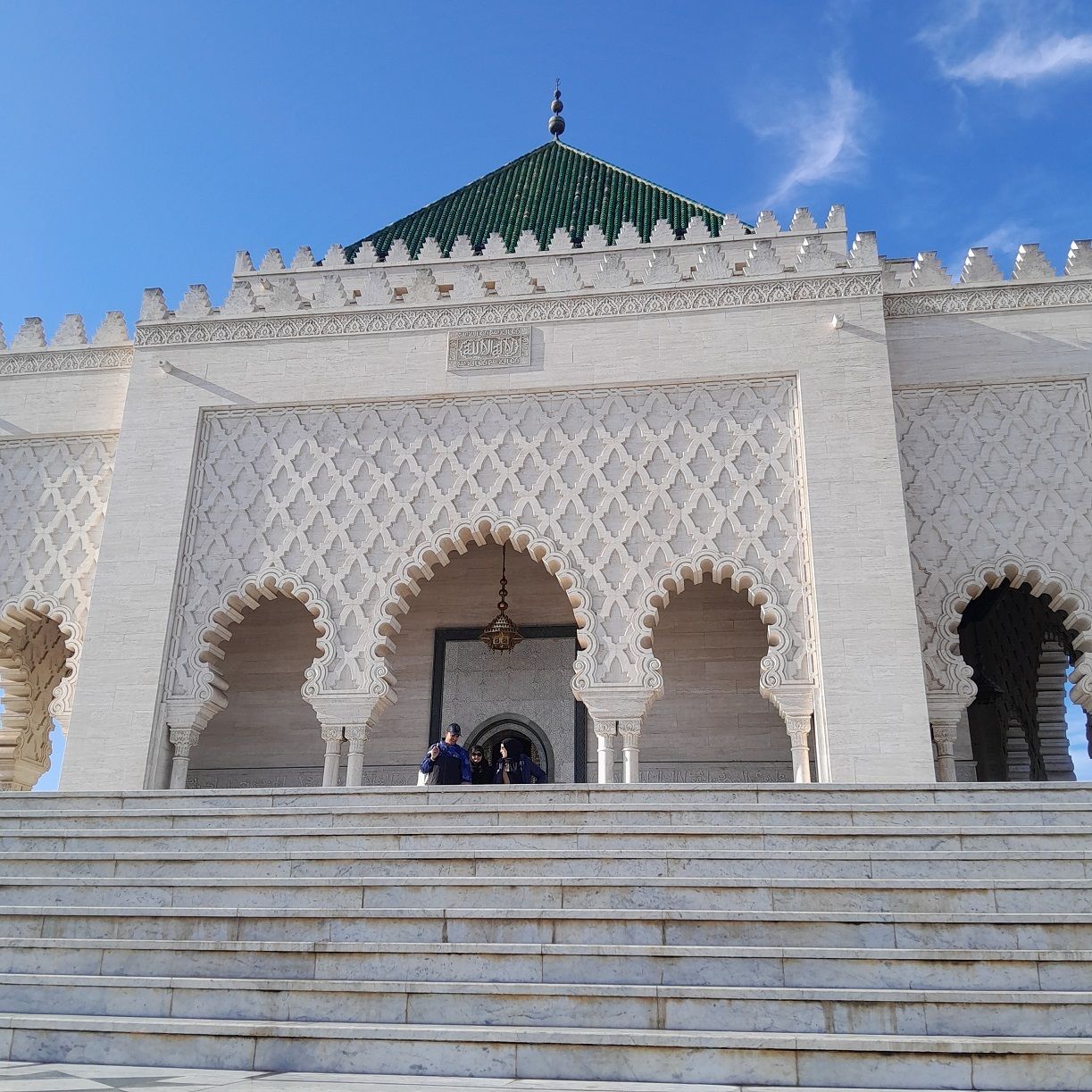
As you approach the entrance to the mausoleum, it's impossible not to notice the spectacular architecture. The walls are adorned with traditional Moroccan decorations of remarkable finesse, with harmonious colours mixing white and gold.
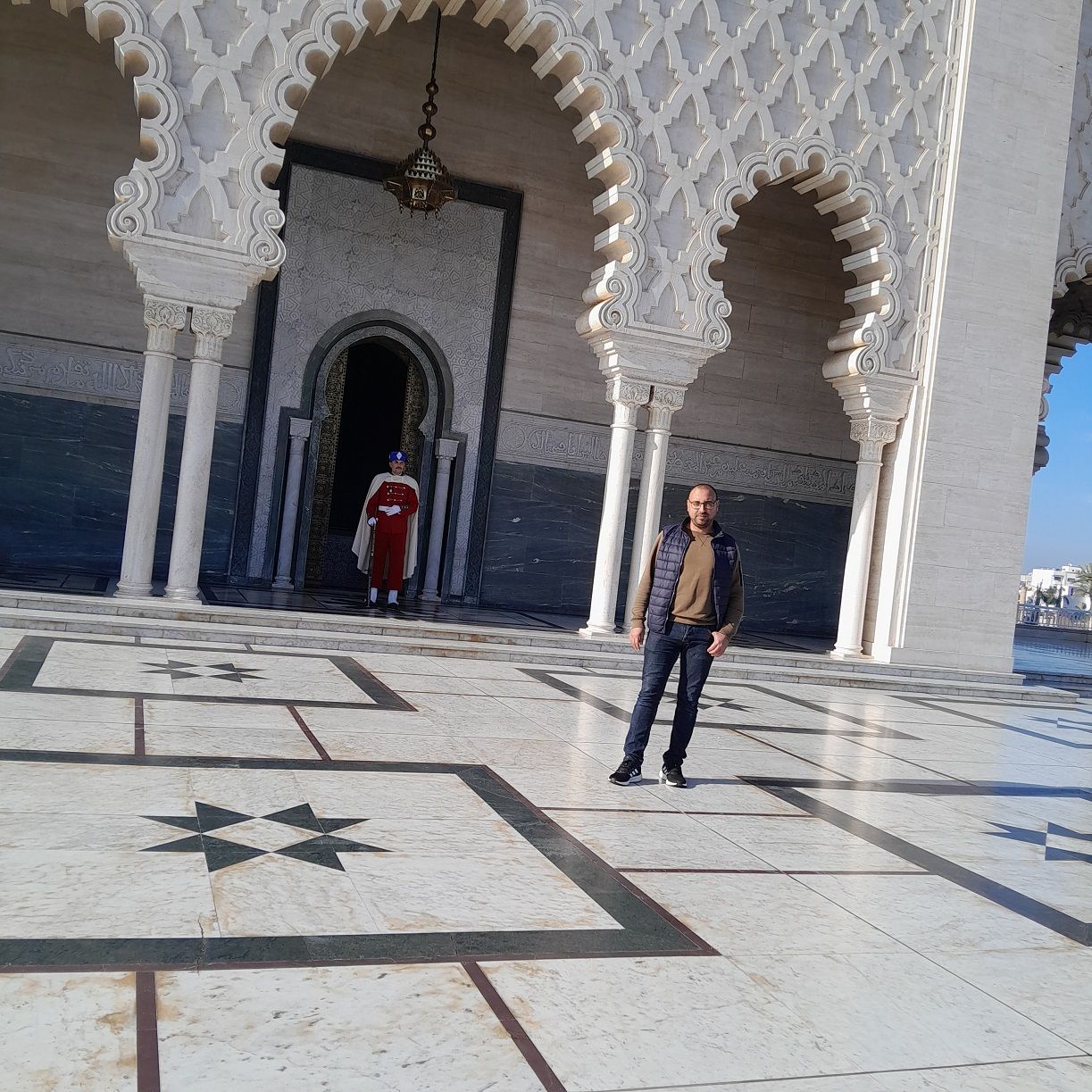
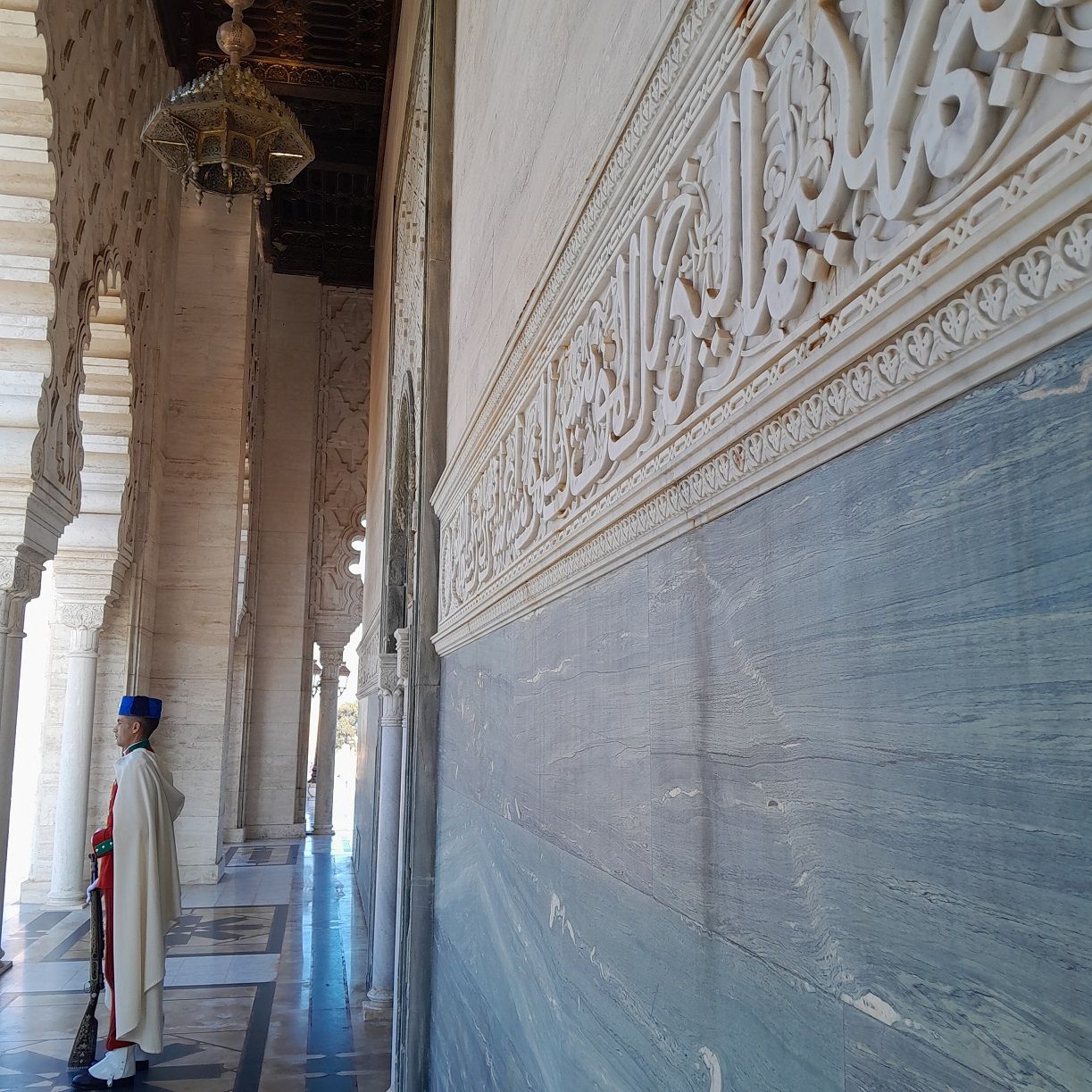
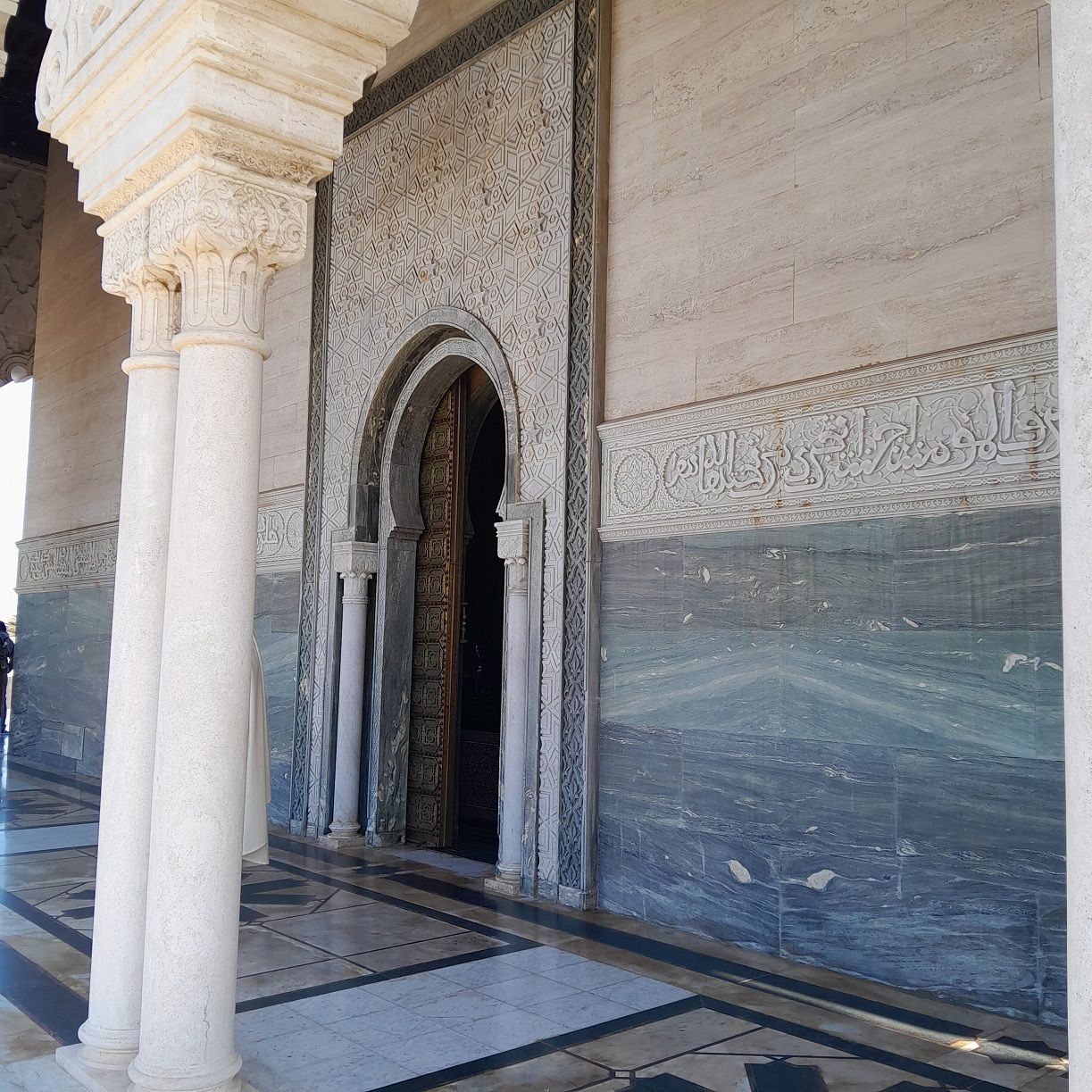
As soon as I stepped inside, an atmosphere of serenity and respect reigned. At the centre of the mausoleum was the tomb.
Visitors of different nationalities were present, taking photos and listening to the tour guides tell stories about King Mohammed V and his importance in Moroccan history. What I really loved was the great respect that everyone showed for this place.
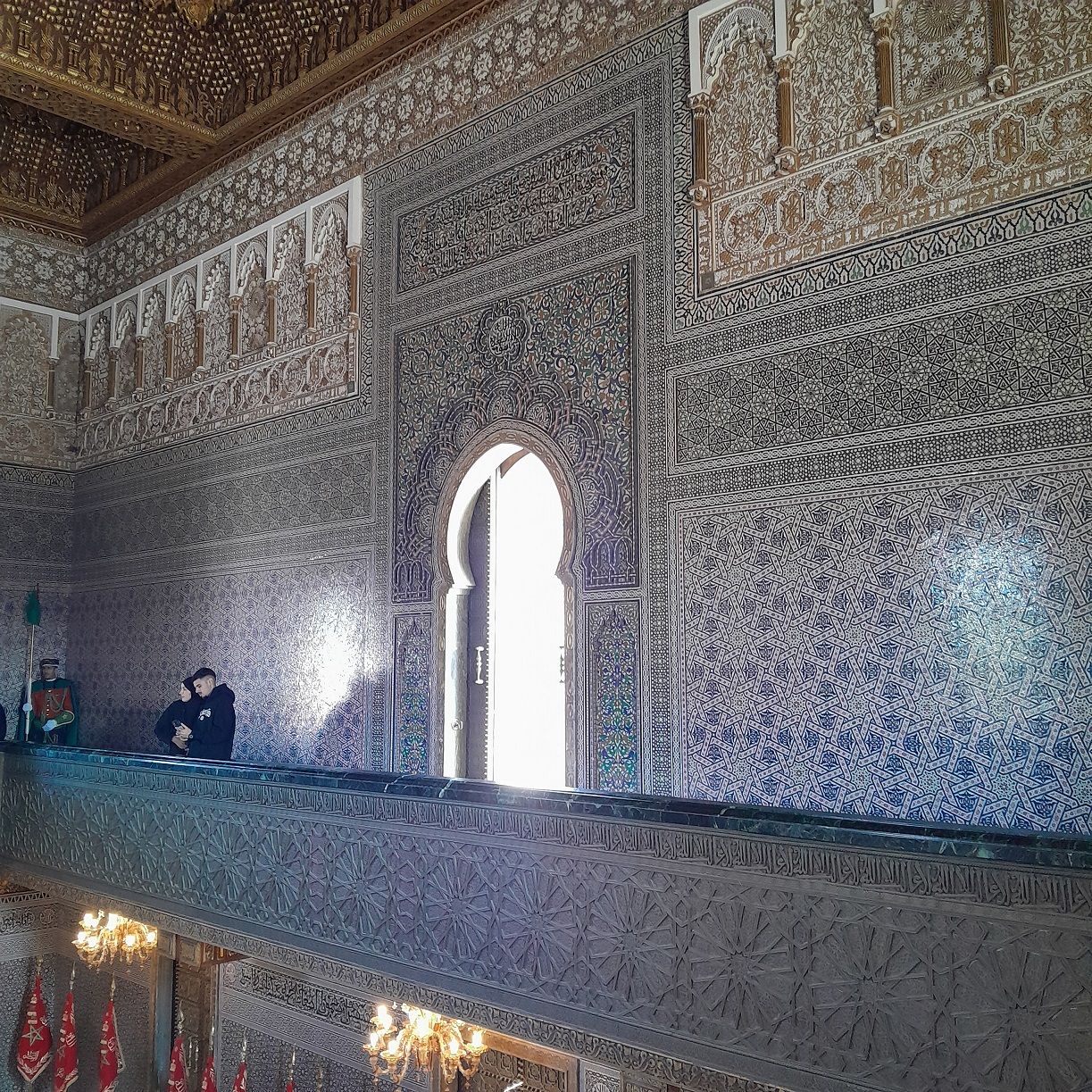
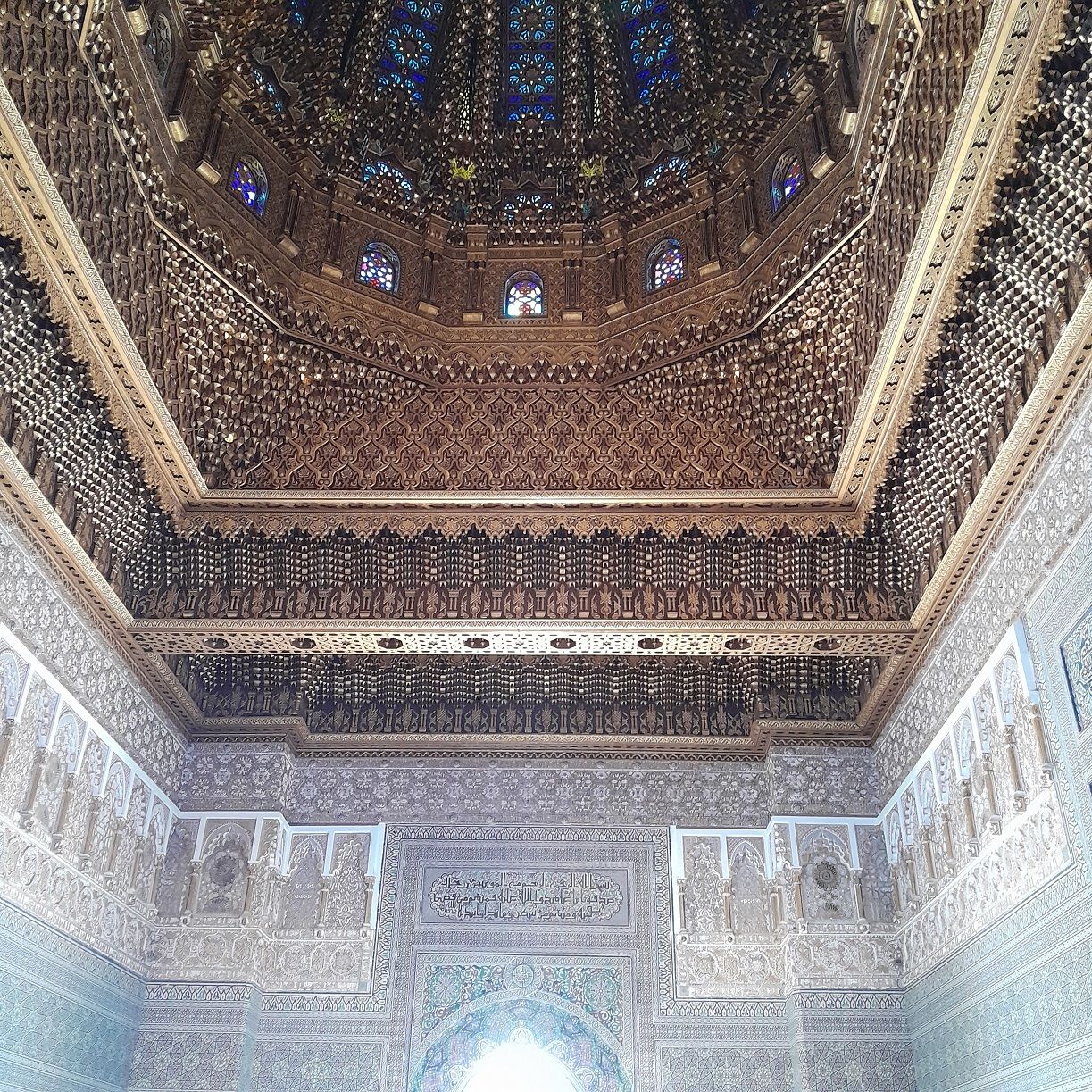
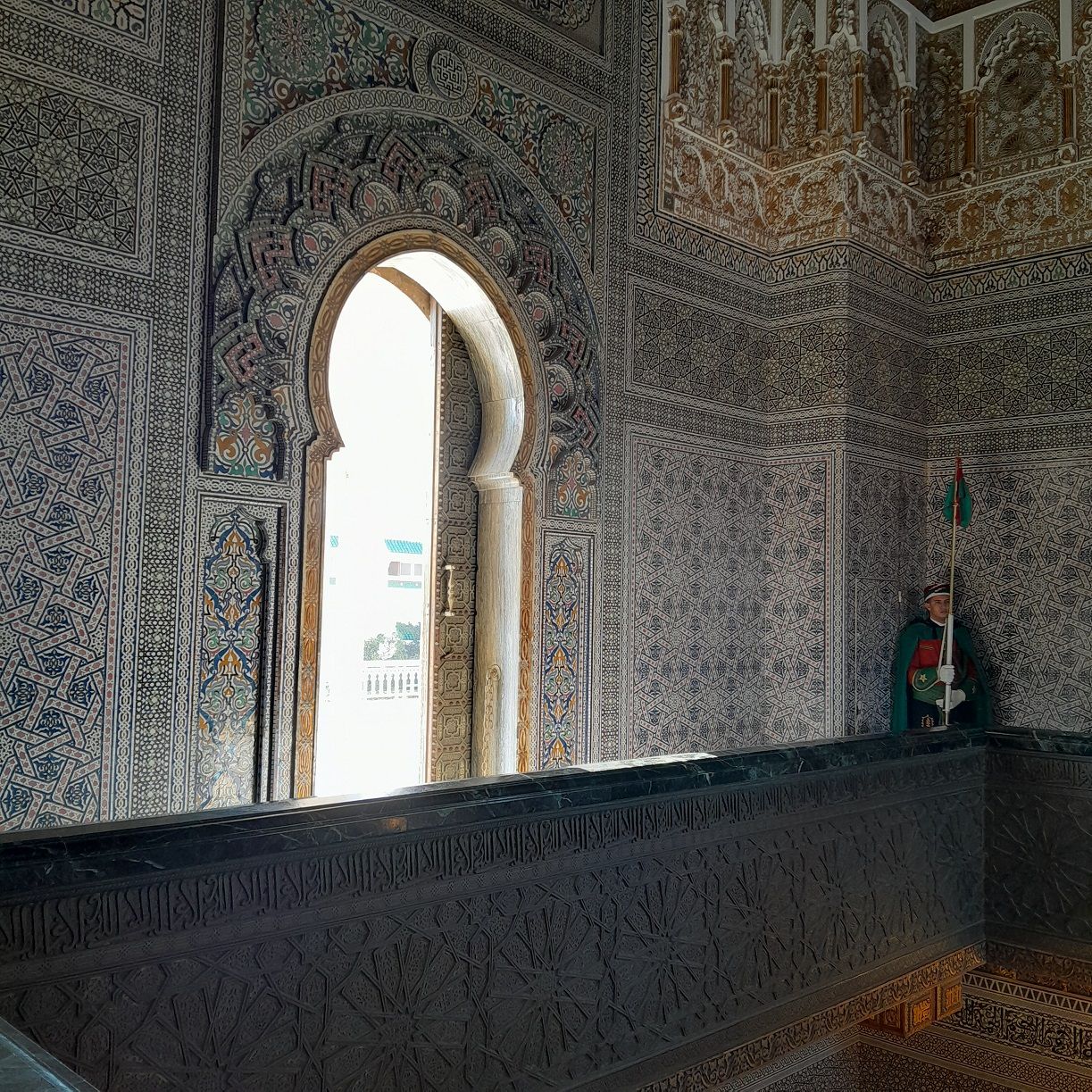
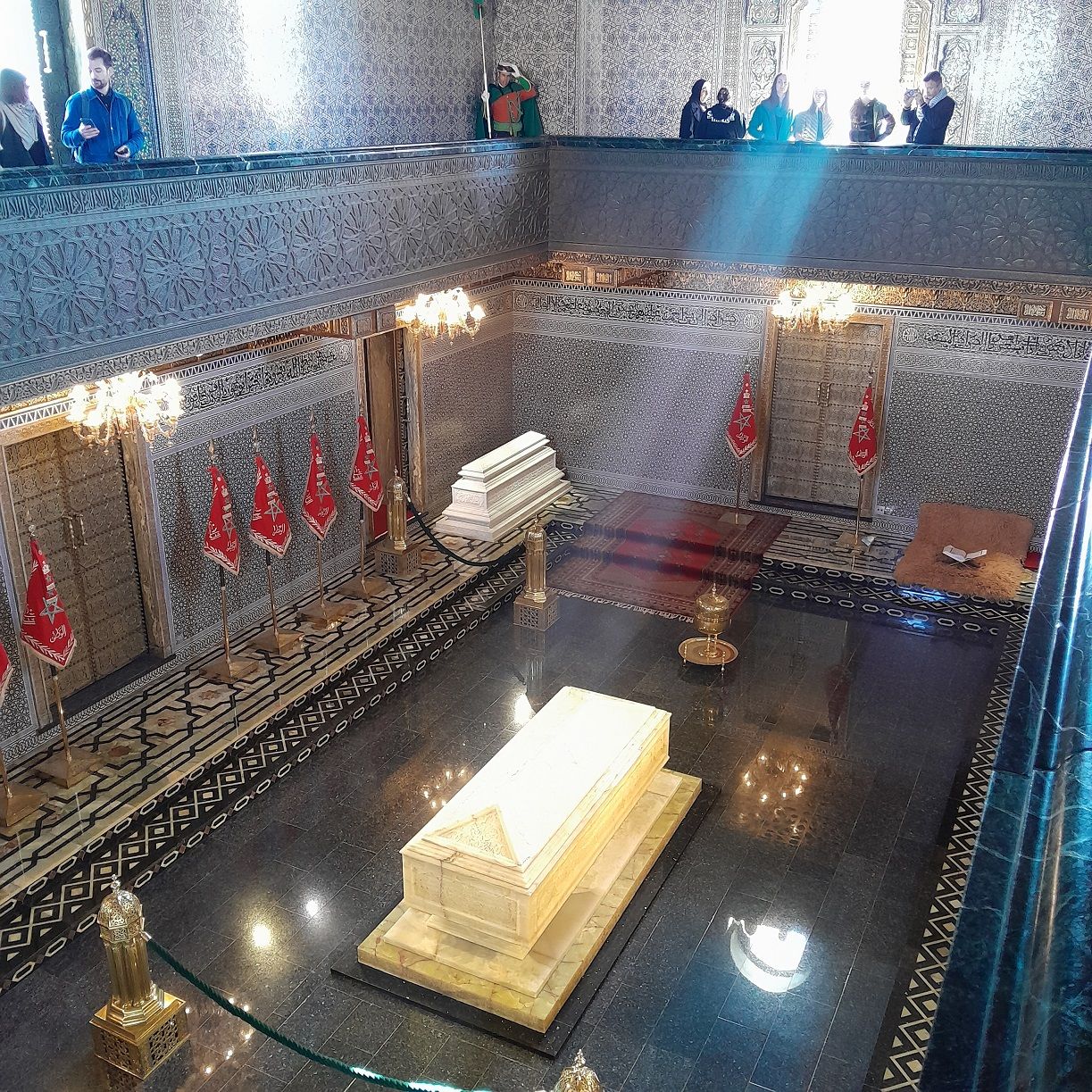
After spending some time inside, I went out for a stroll around the square surrounding the mausoleum to take some more photos.
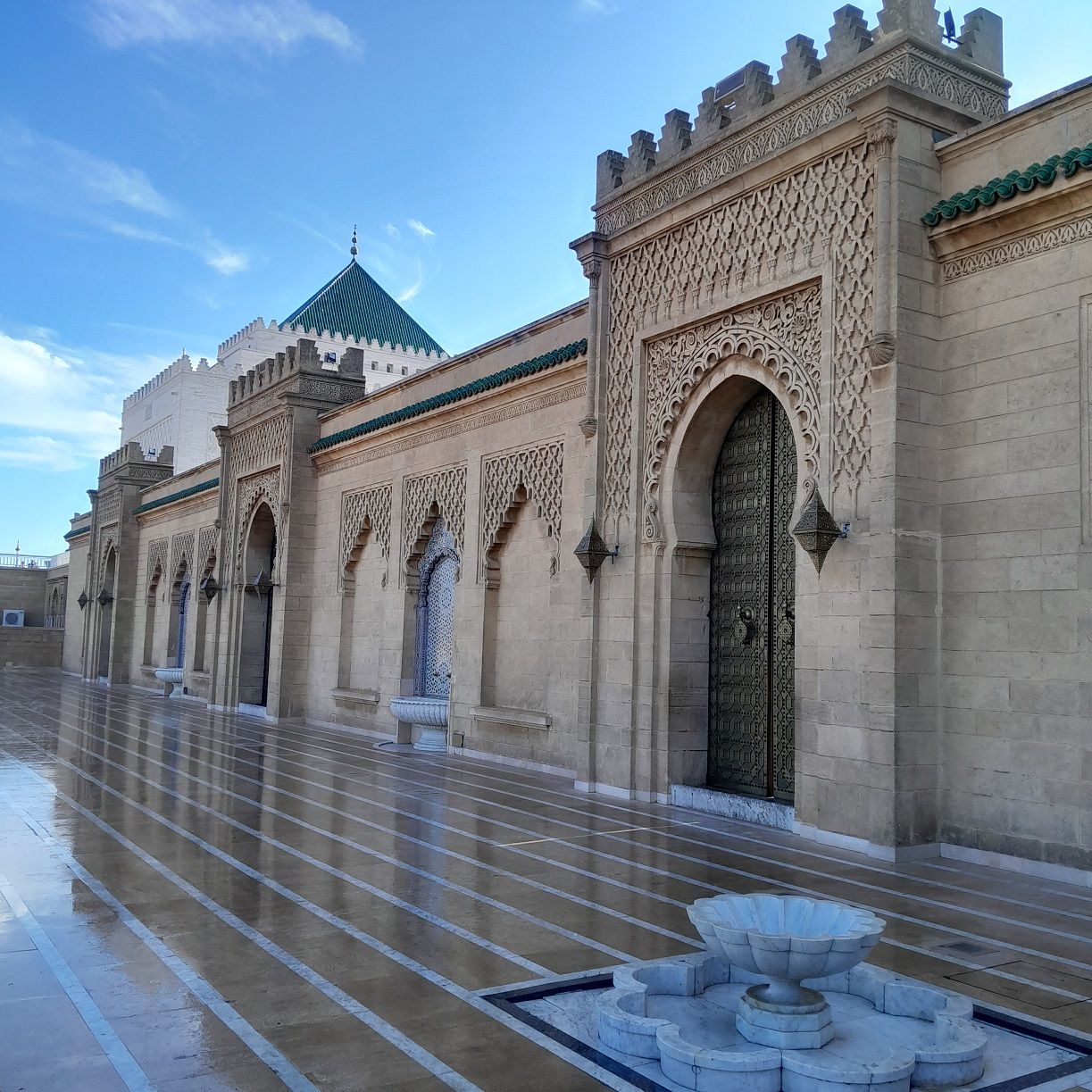
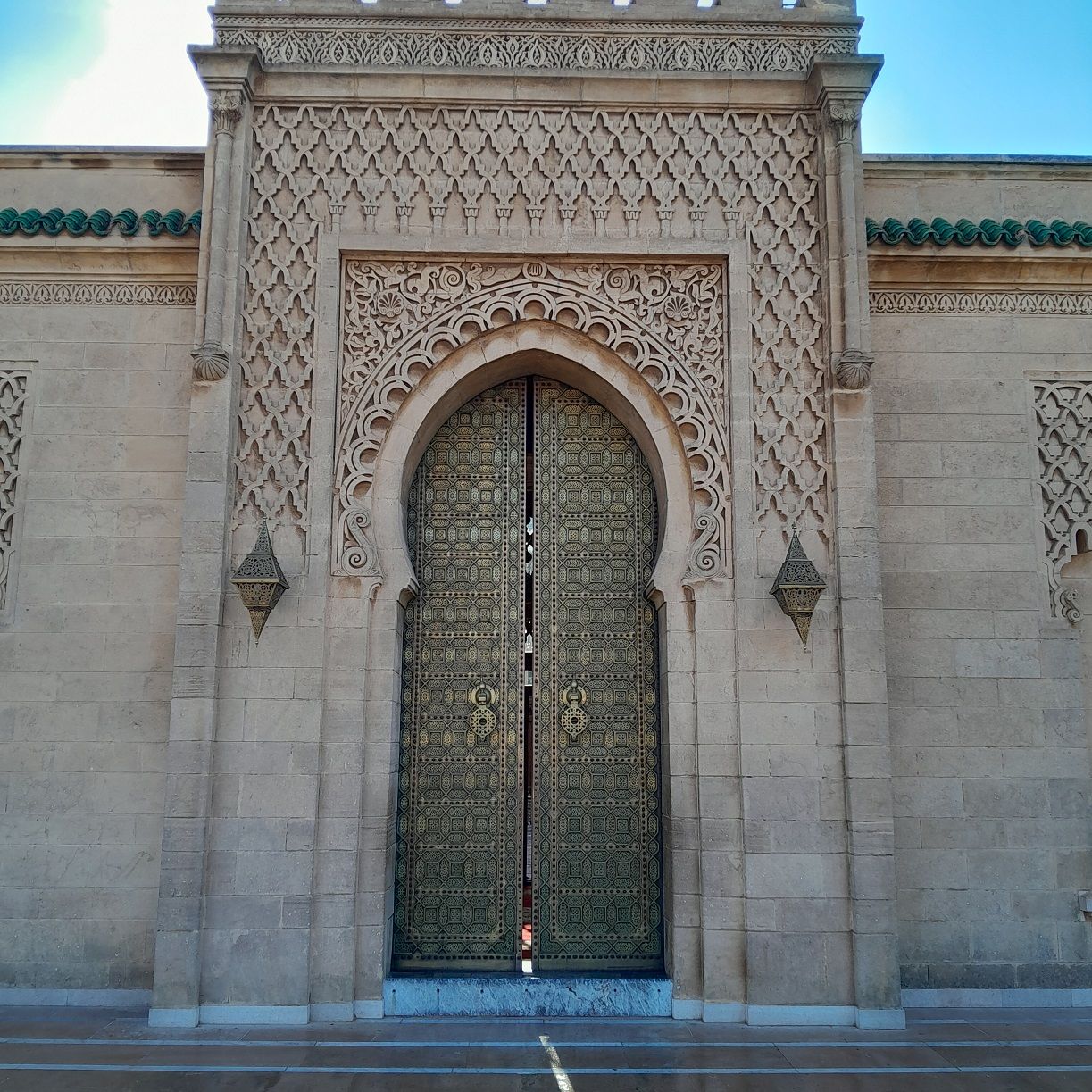
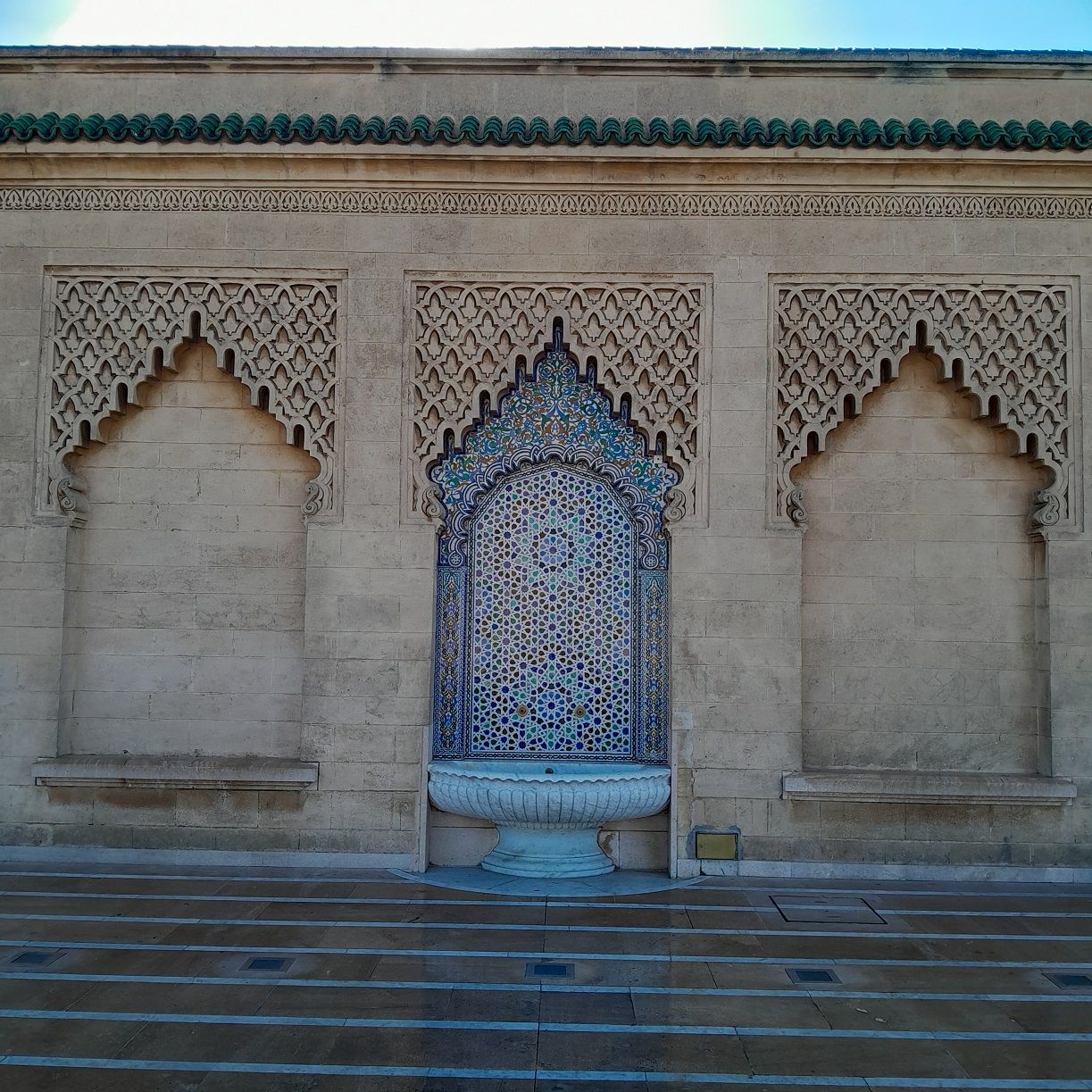
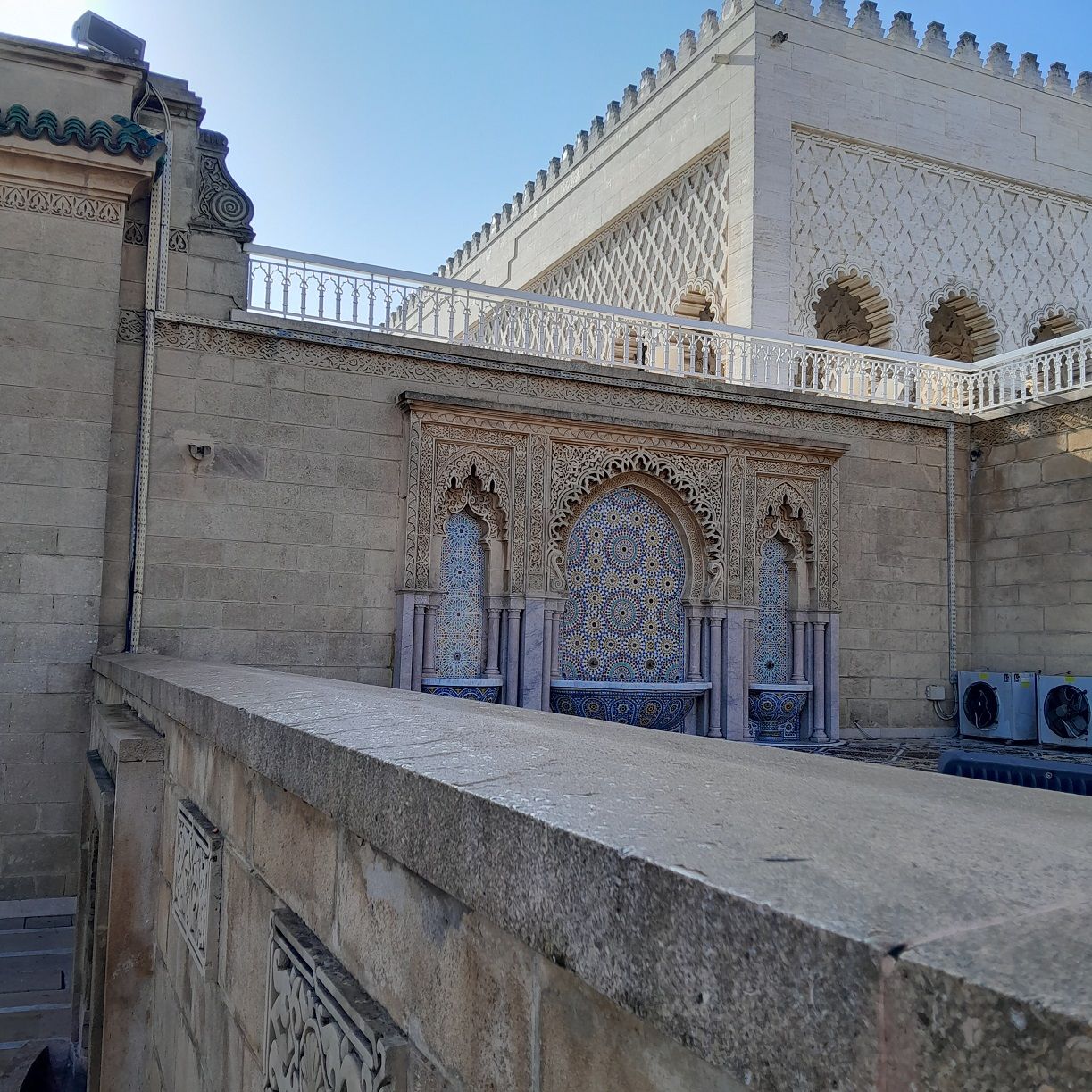
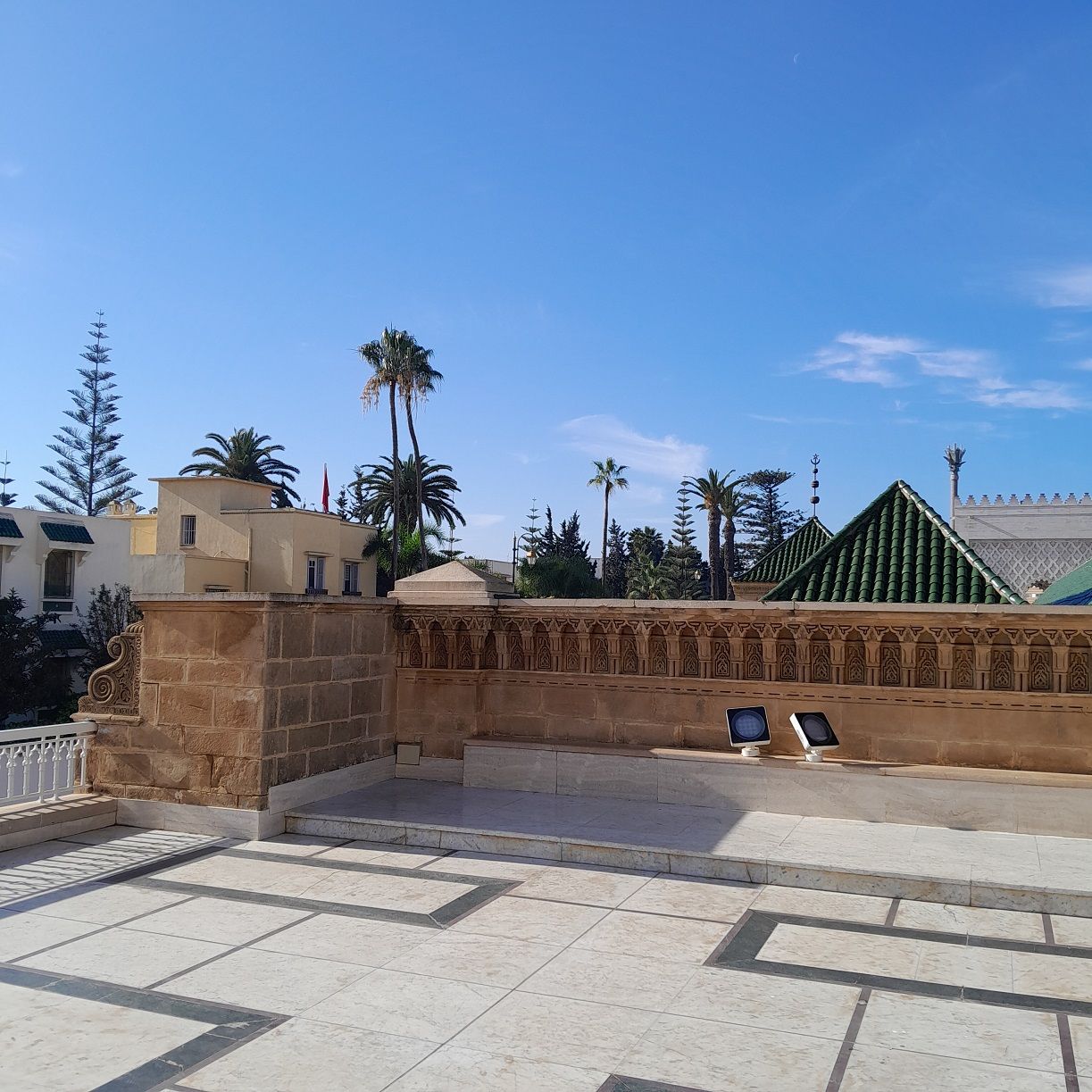
I was delighted to have decided to take this tour, as it was an enriching experience that enabled me to learn more about the history of my country and the value of the monuments that bear the stories of the past. I hope you enjoyed this visit, and the photos I took to share with you. Take good care of yourself, and see you soon for new posts!

All photos taken by my own phone (Samsung Galaxy A04s) !
The first photo is edited on canva !
